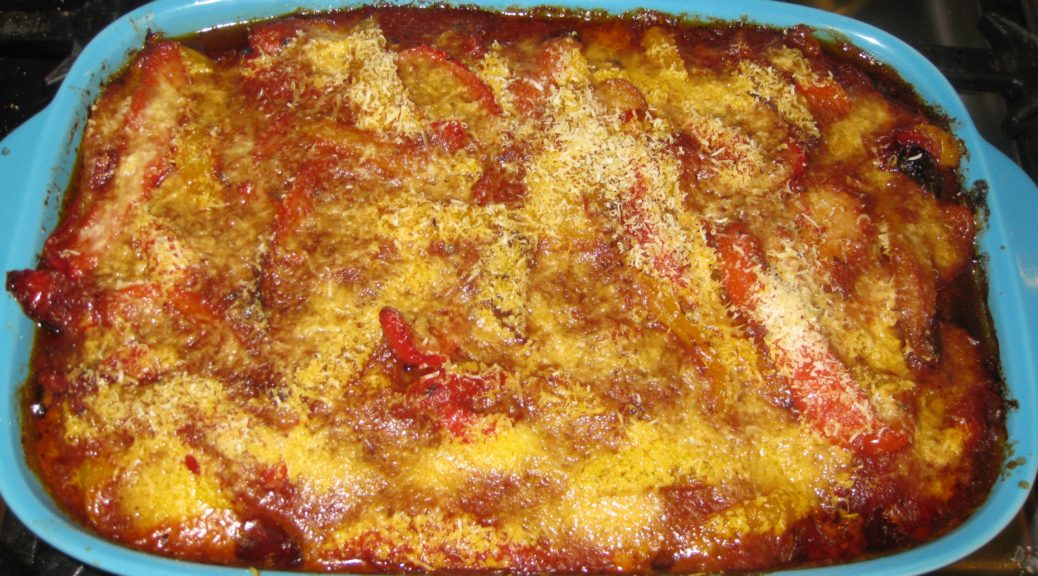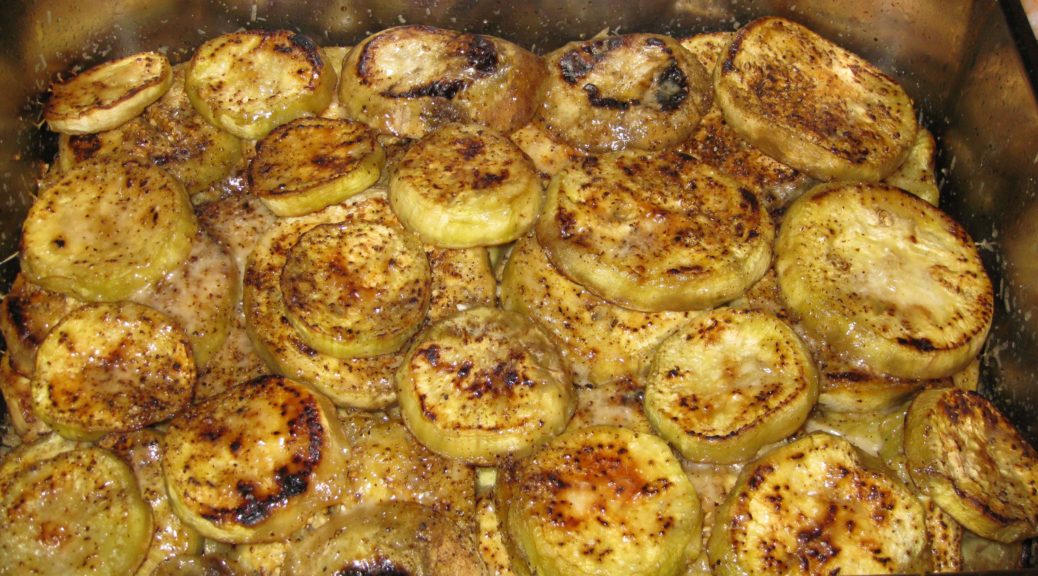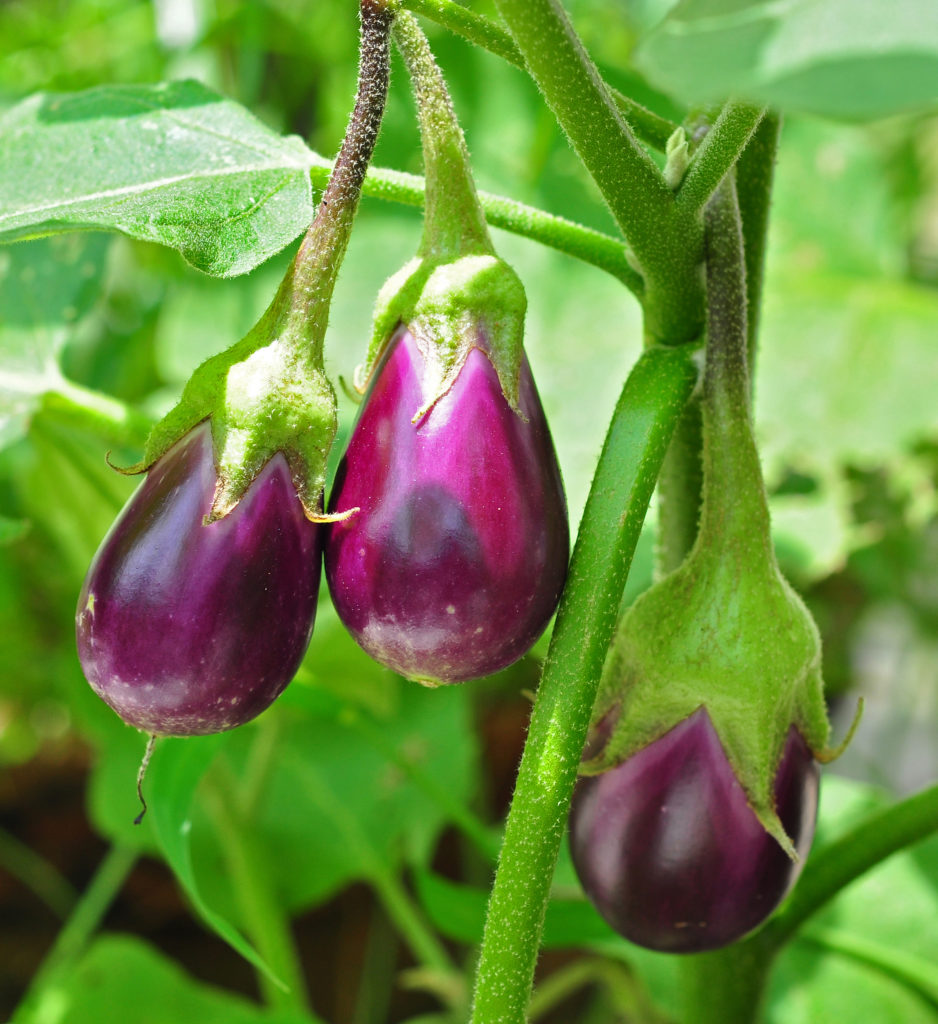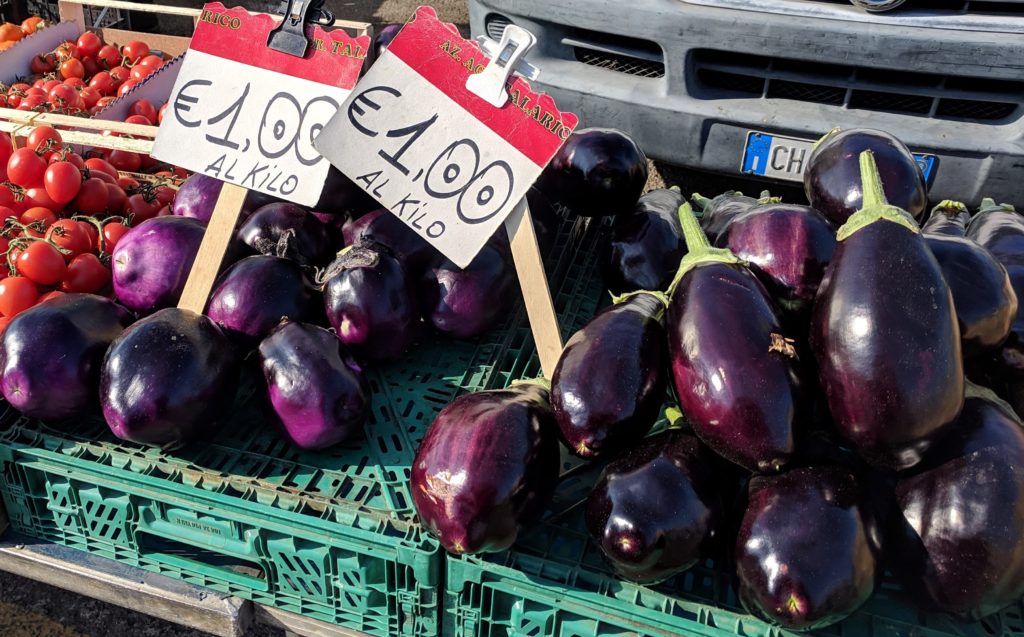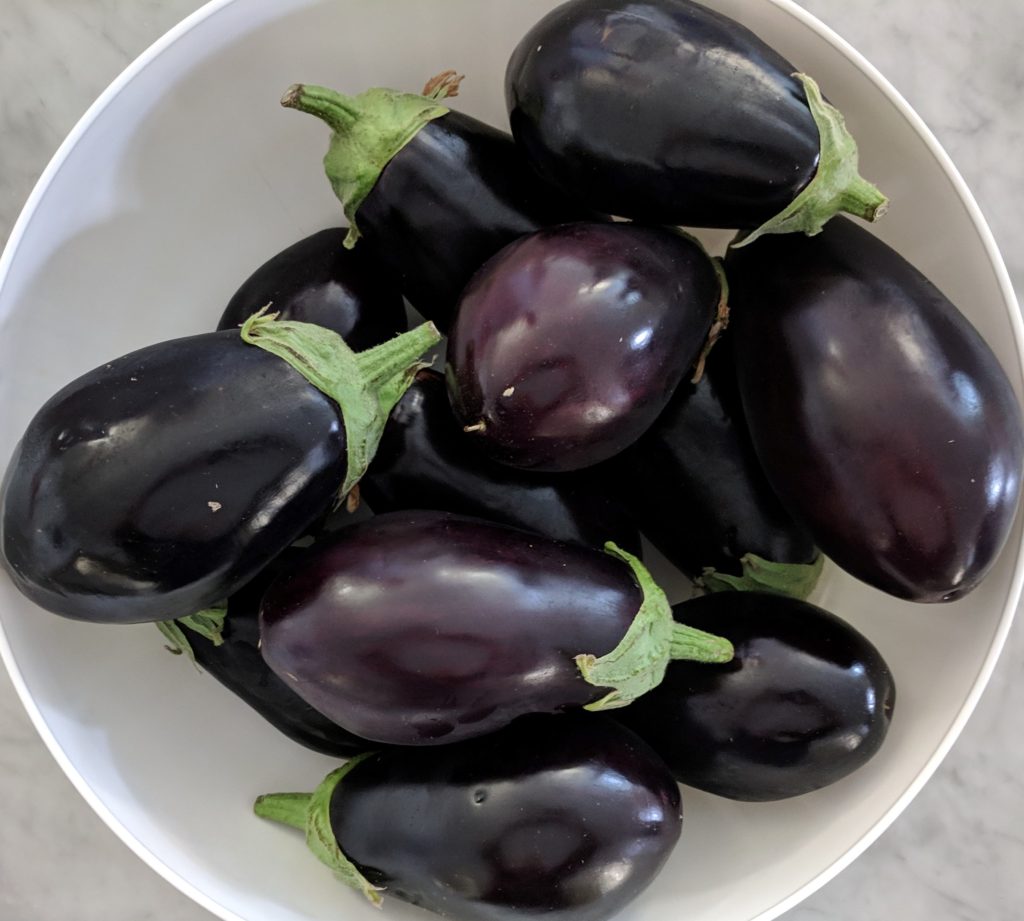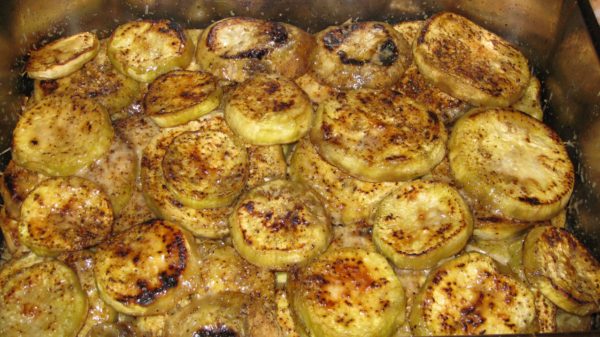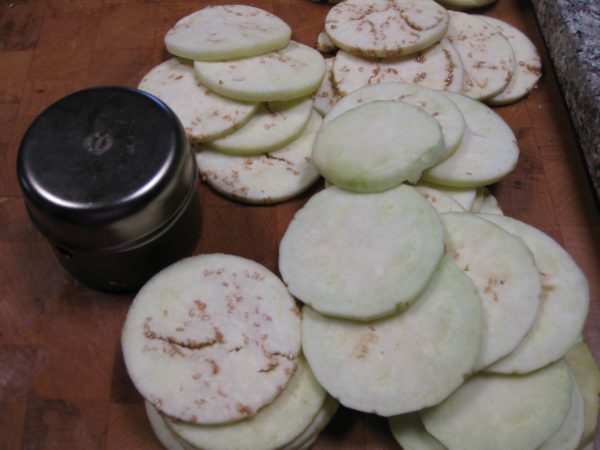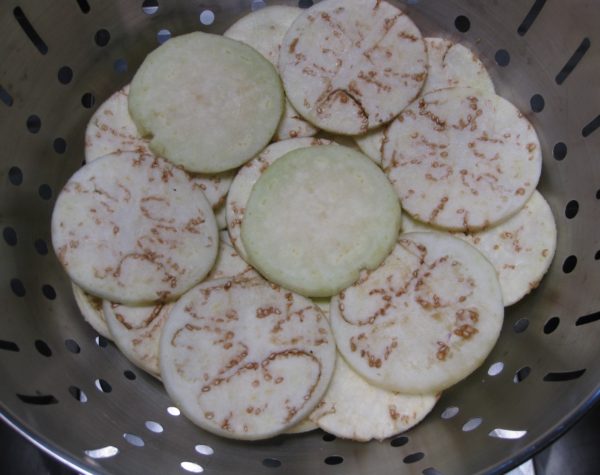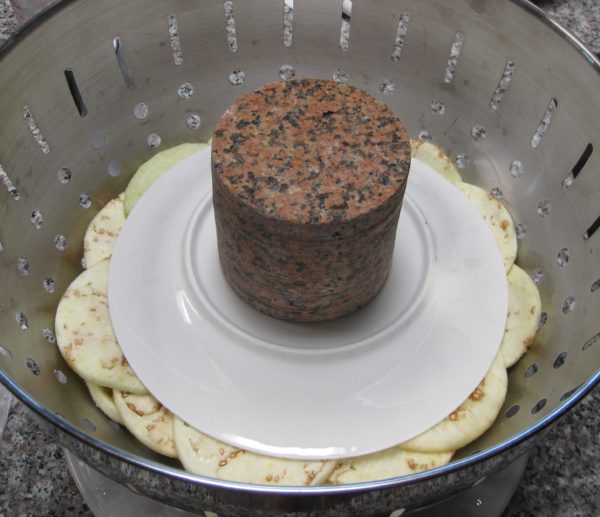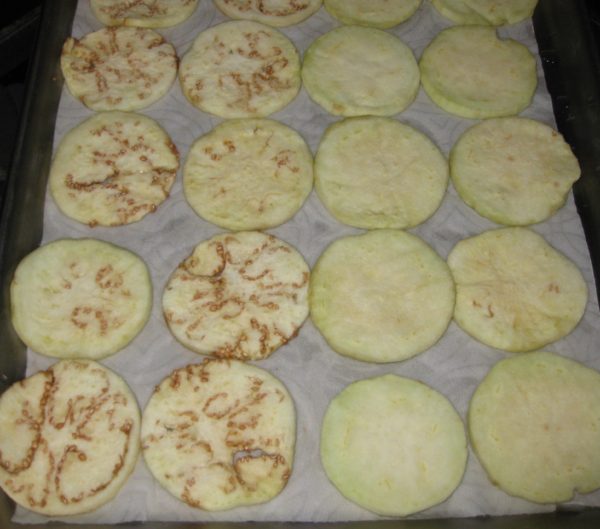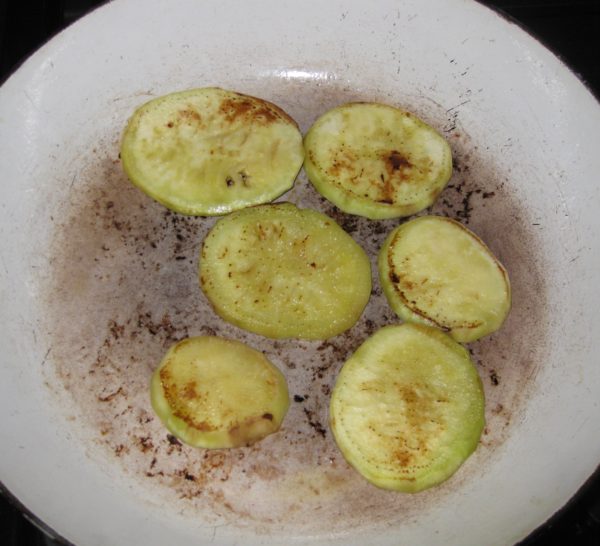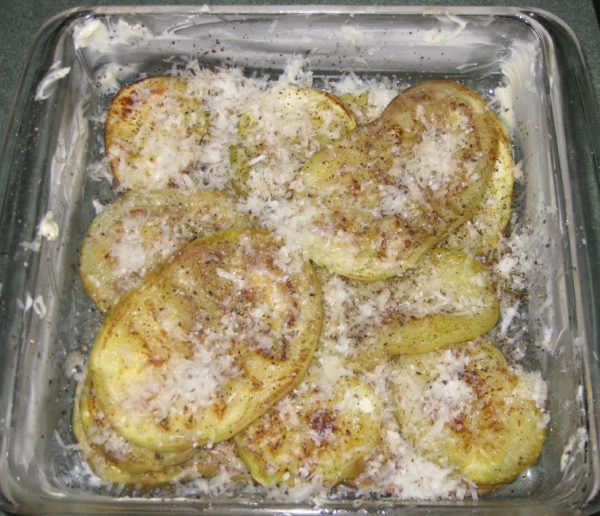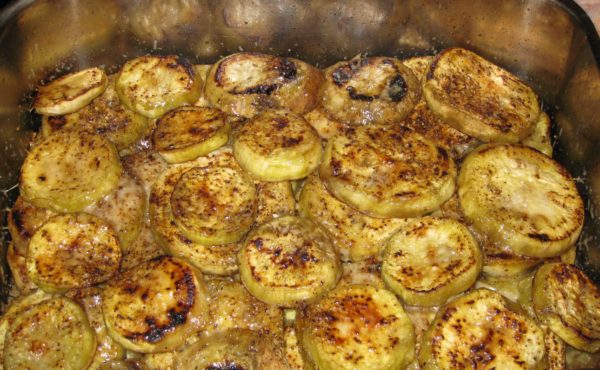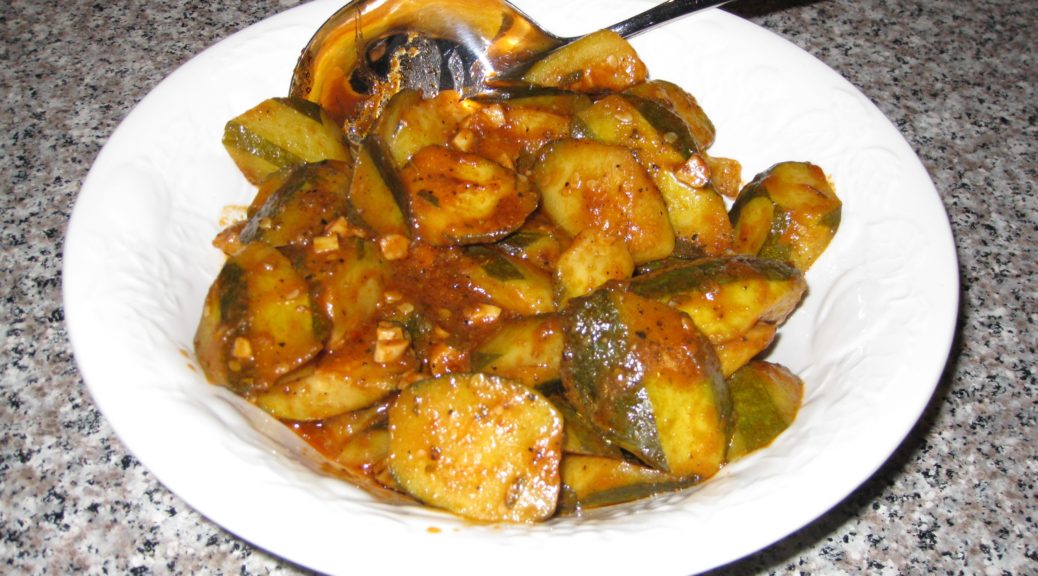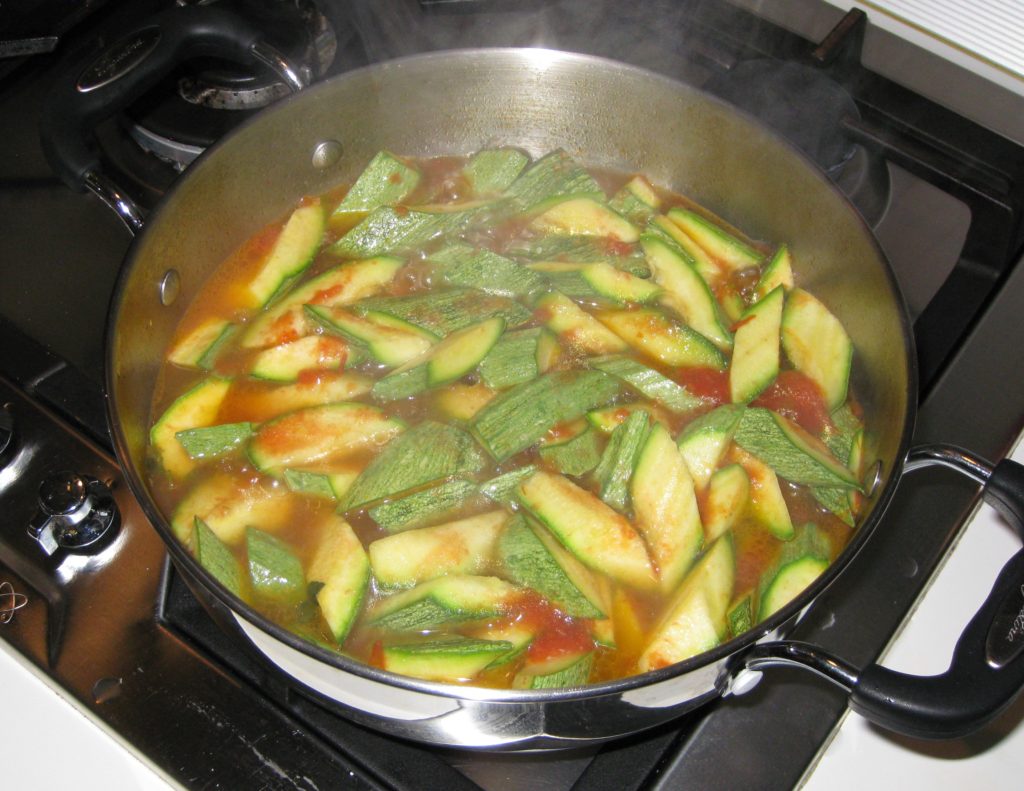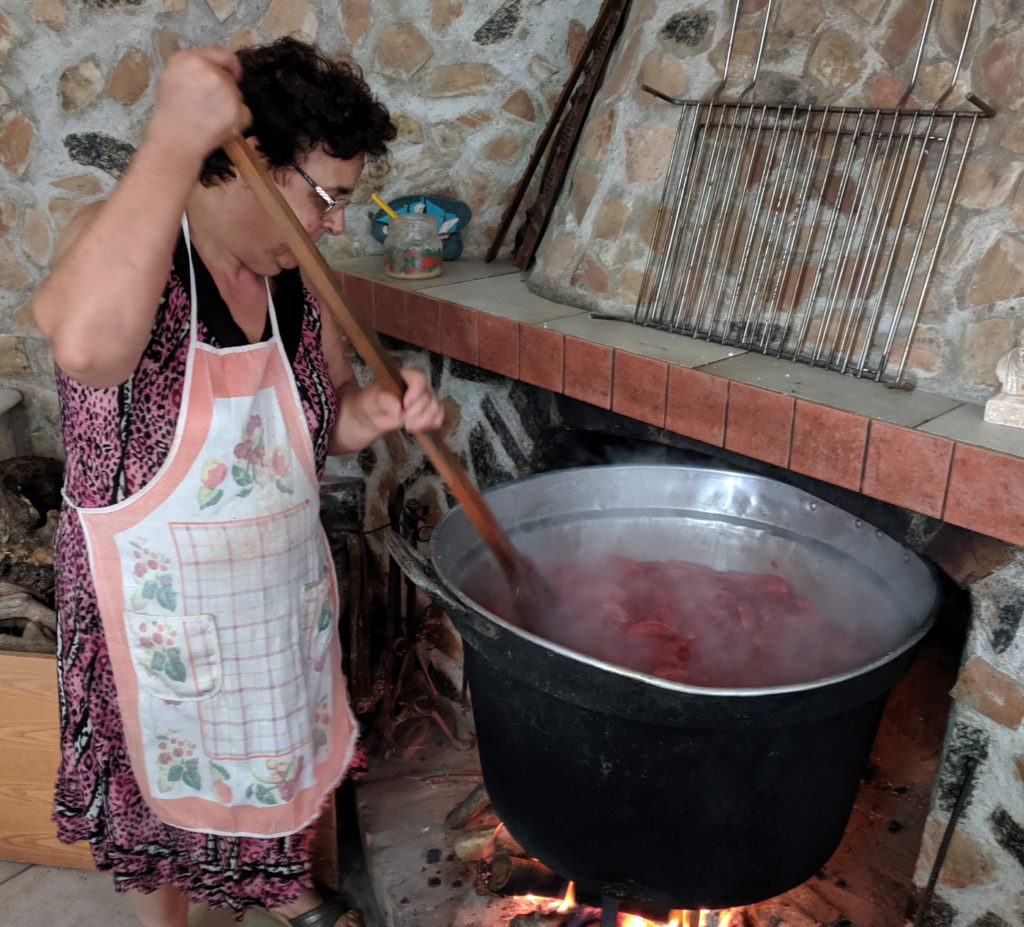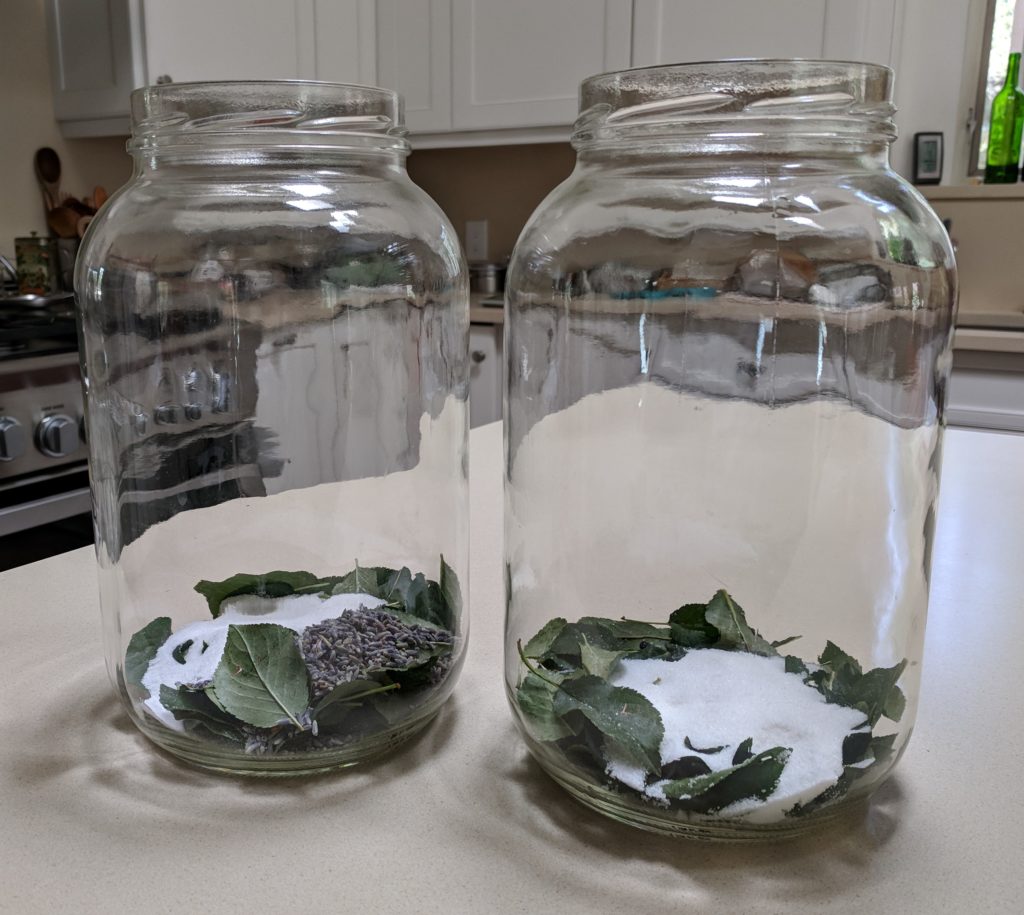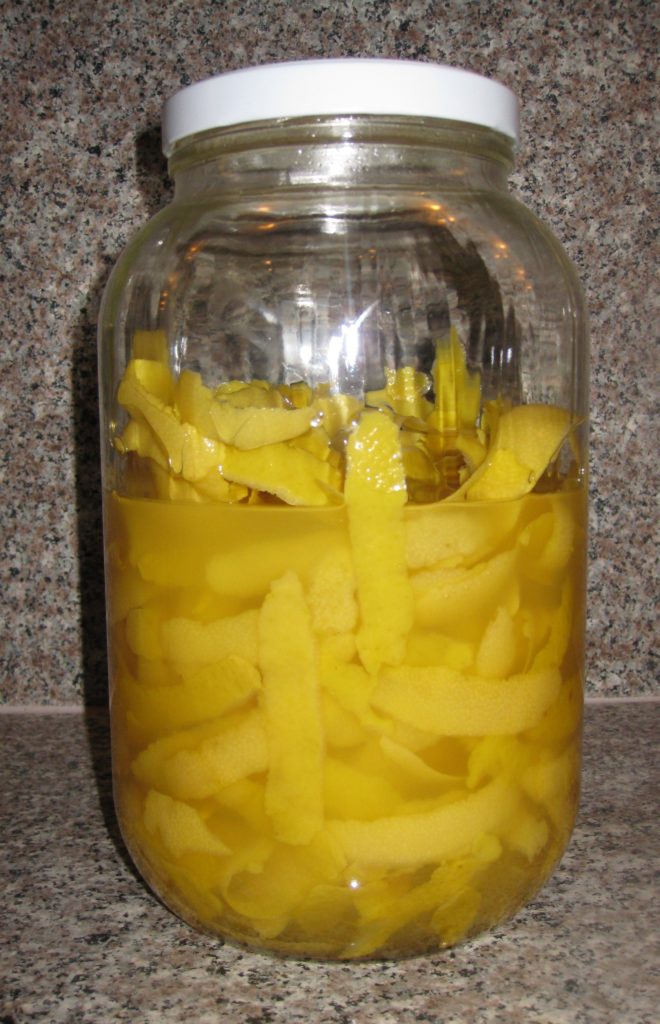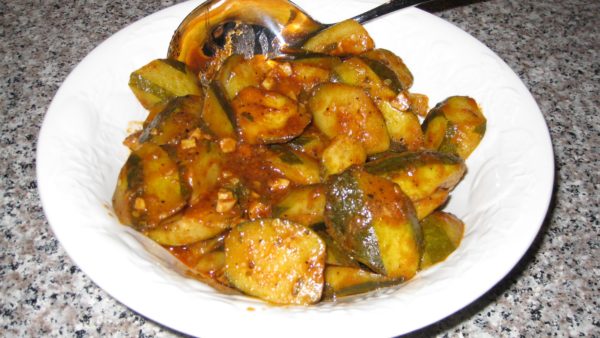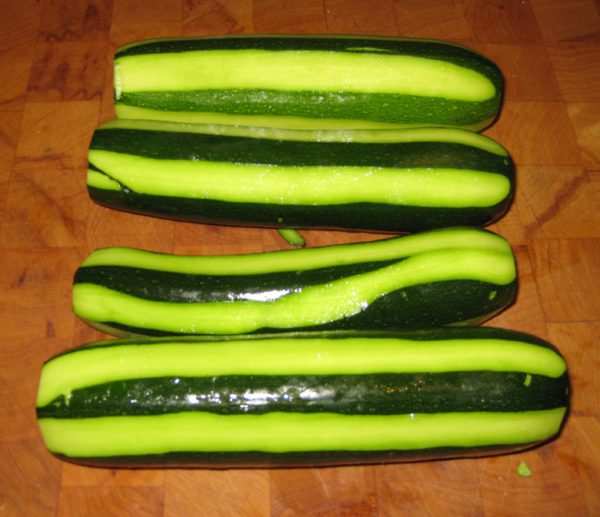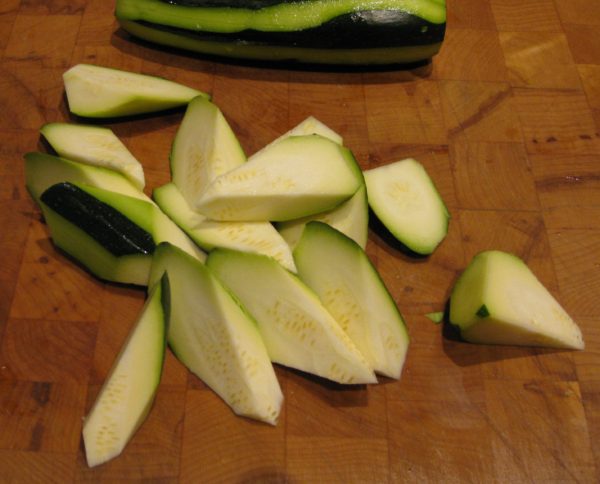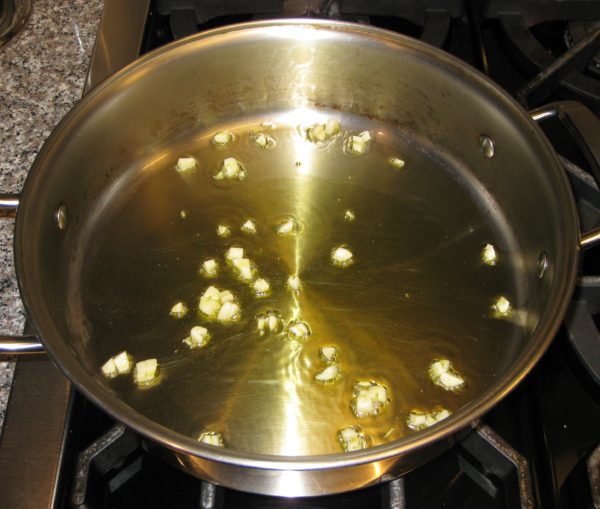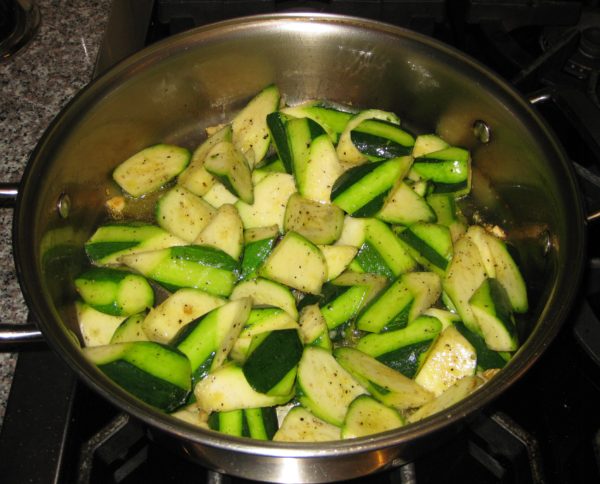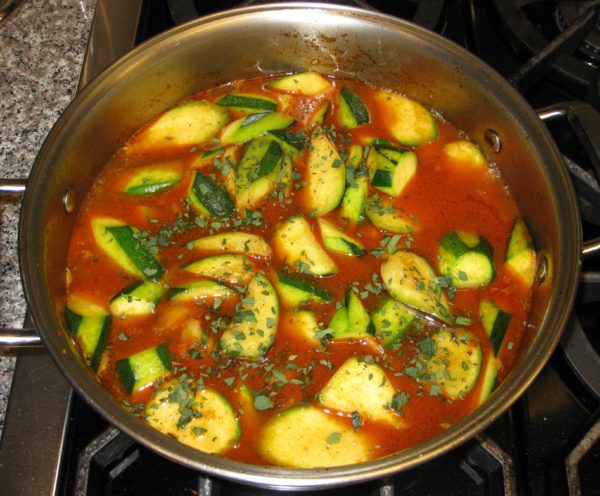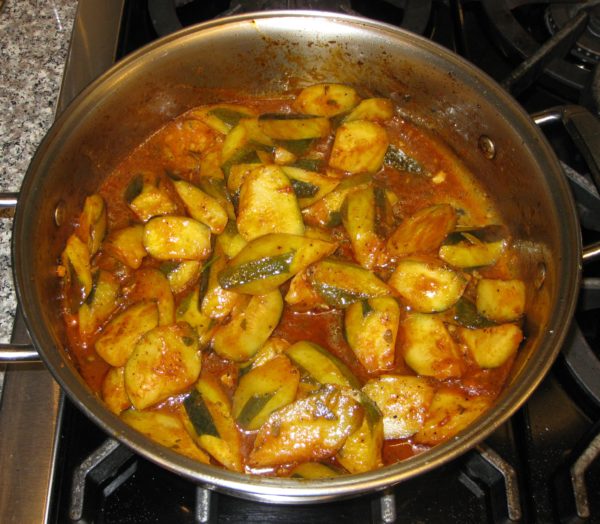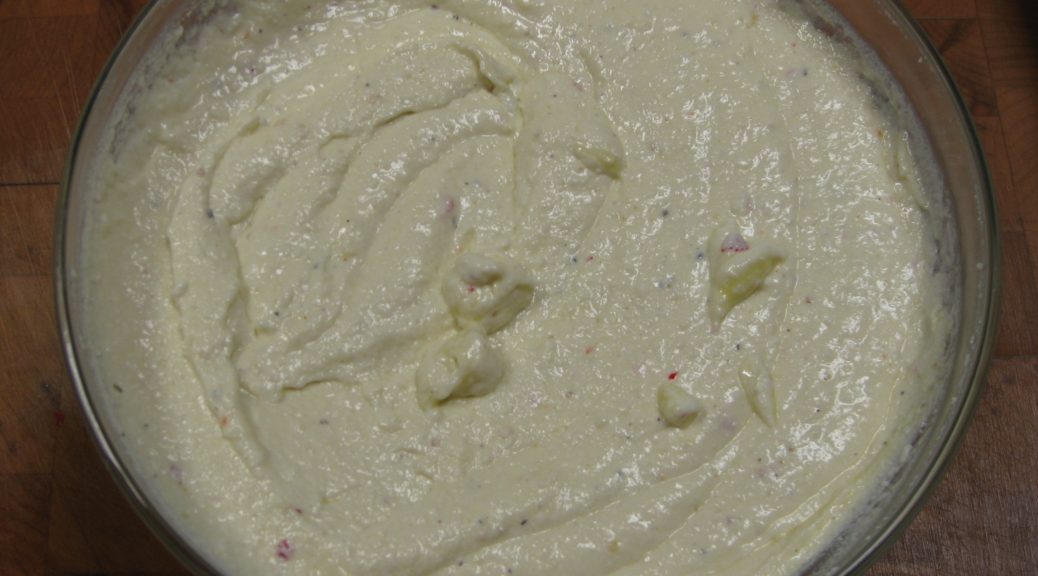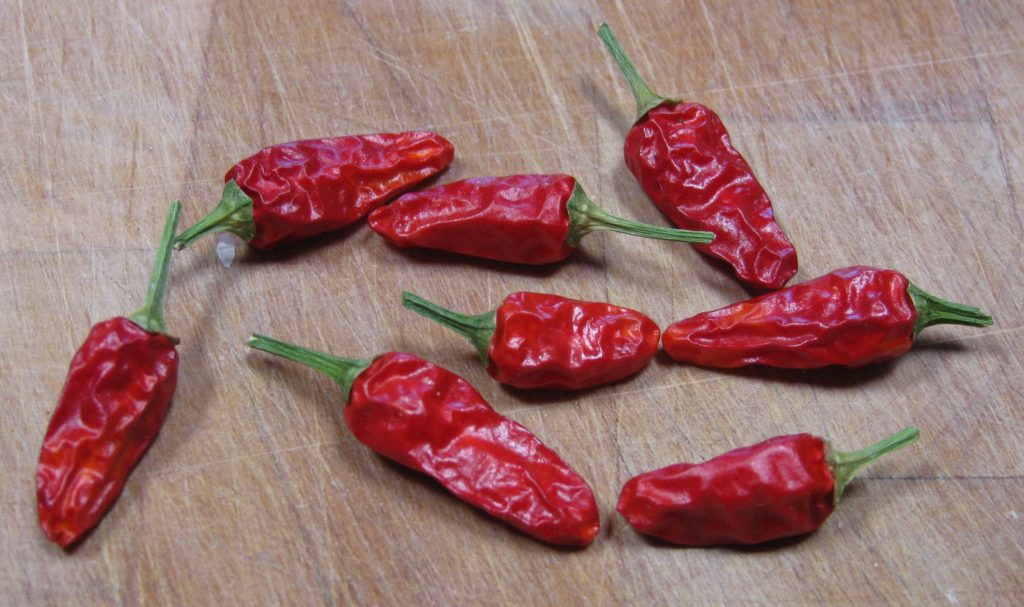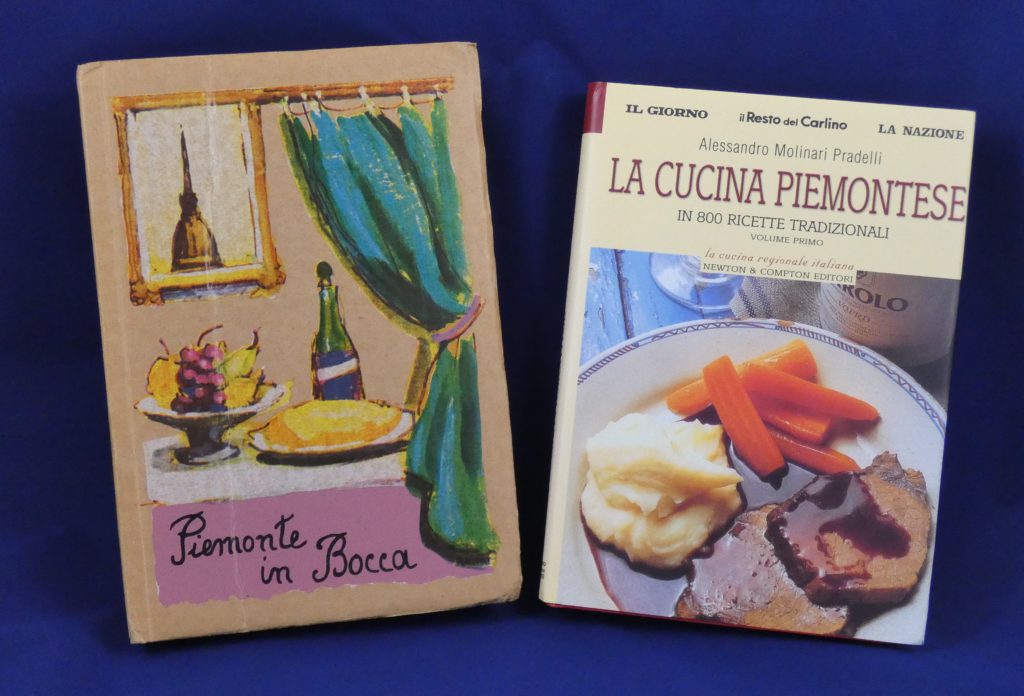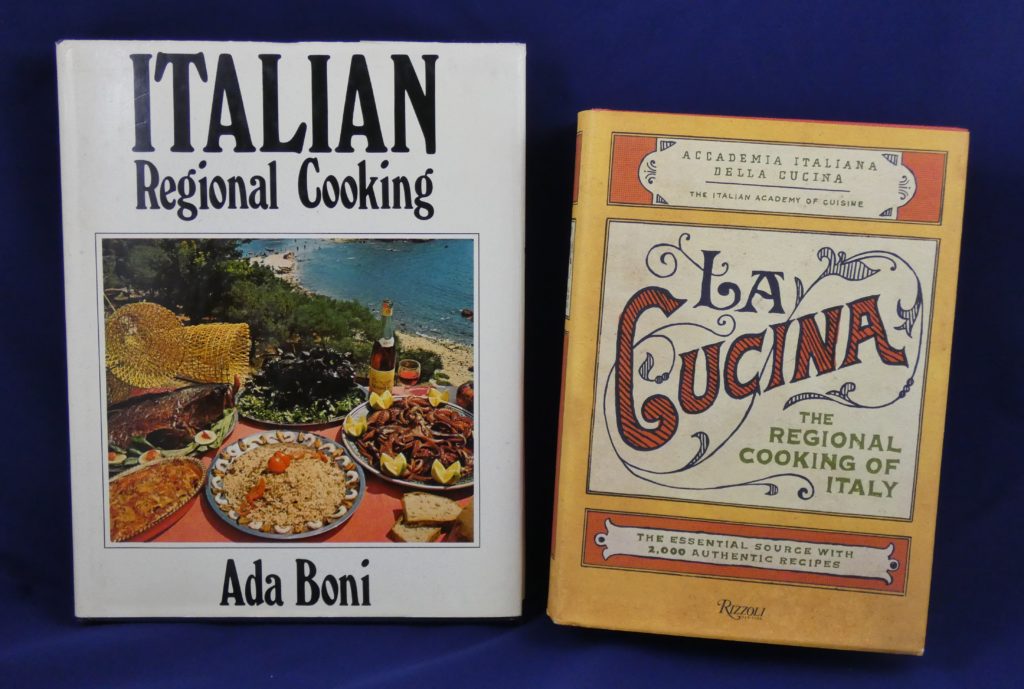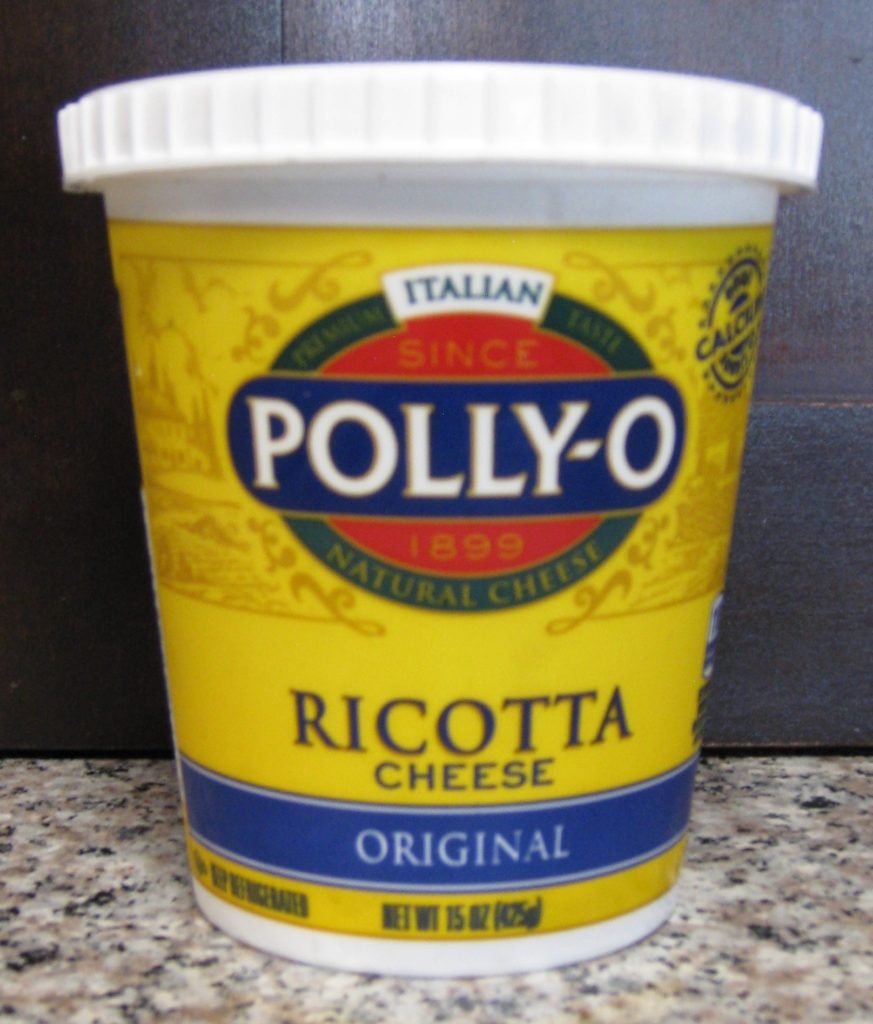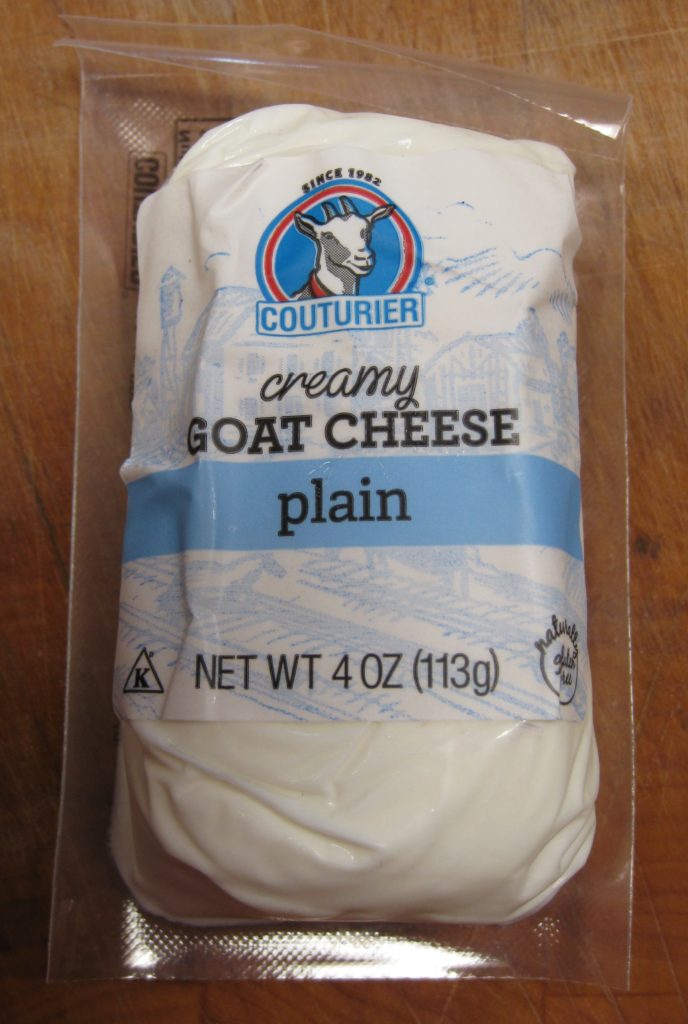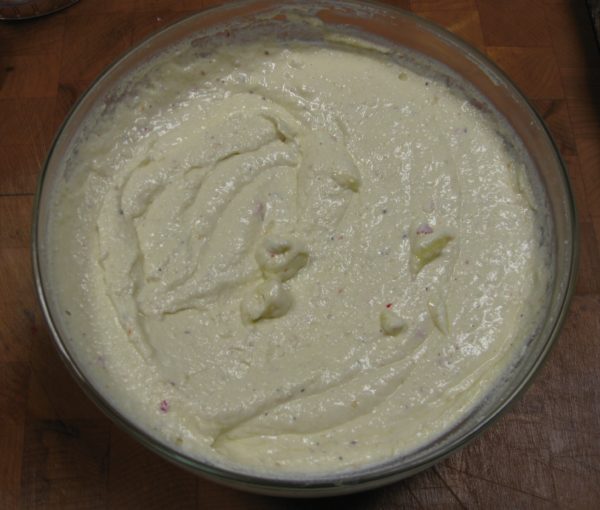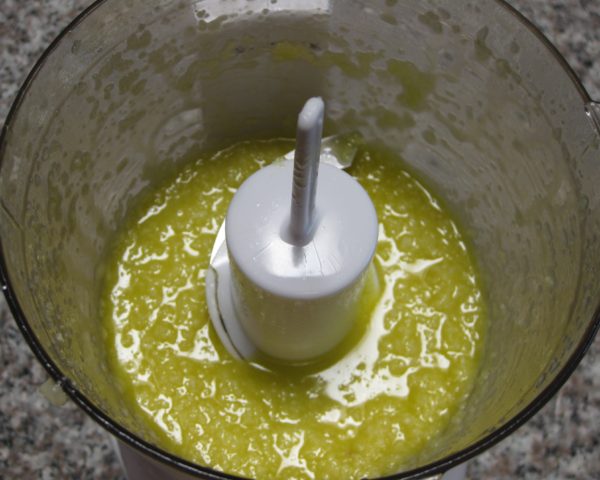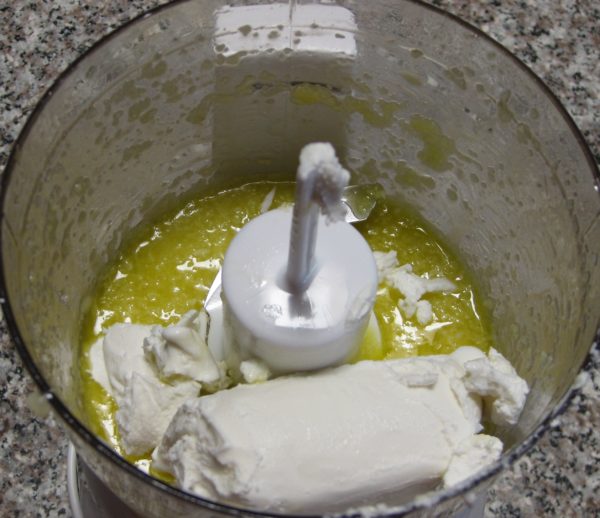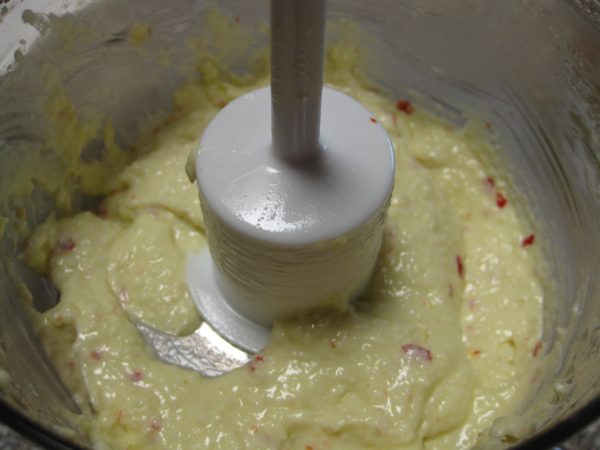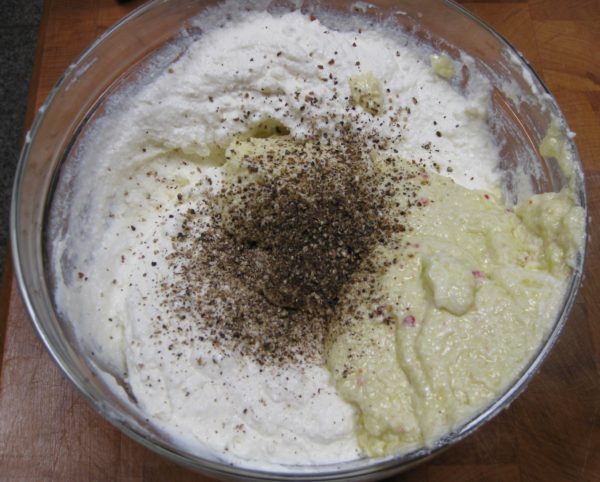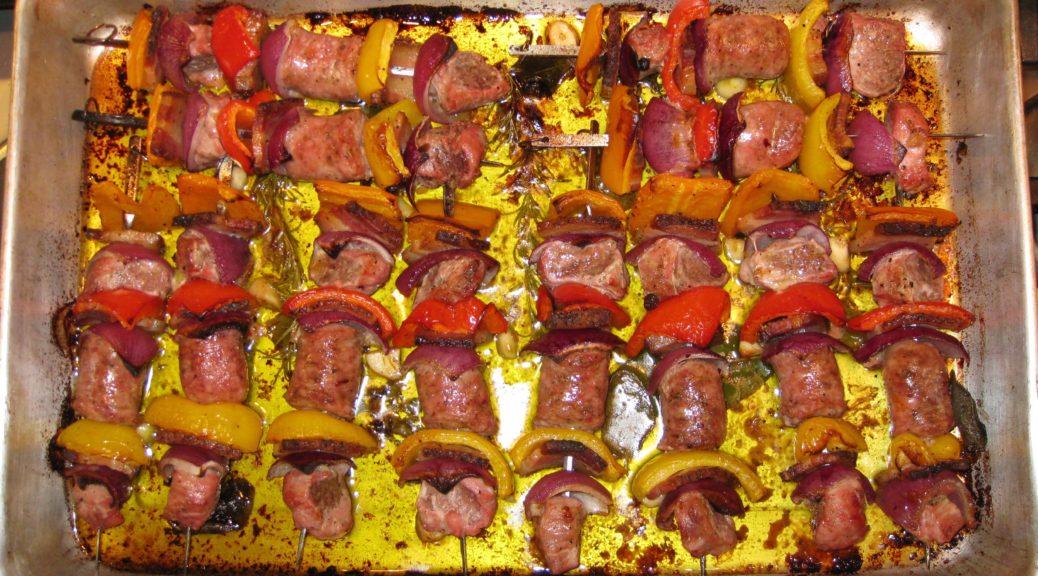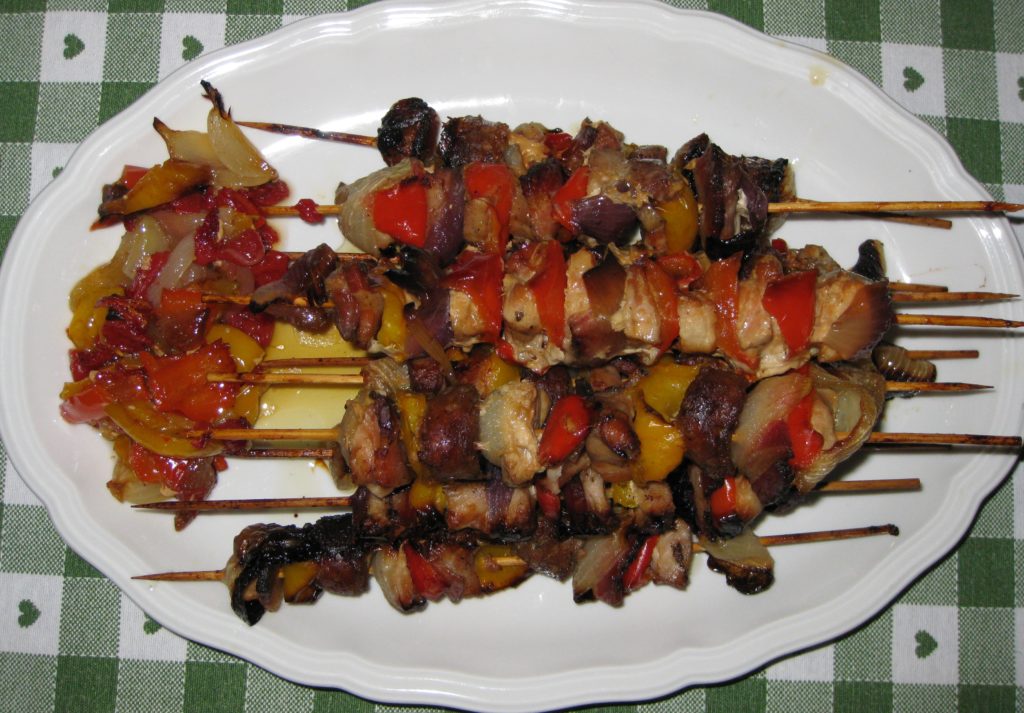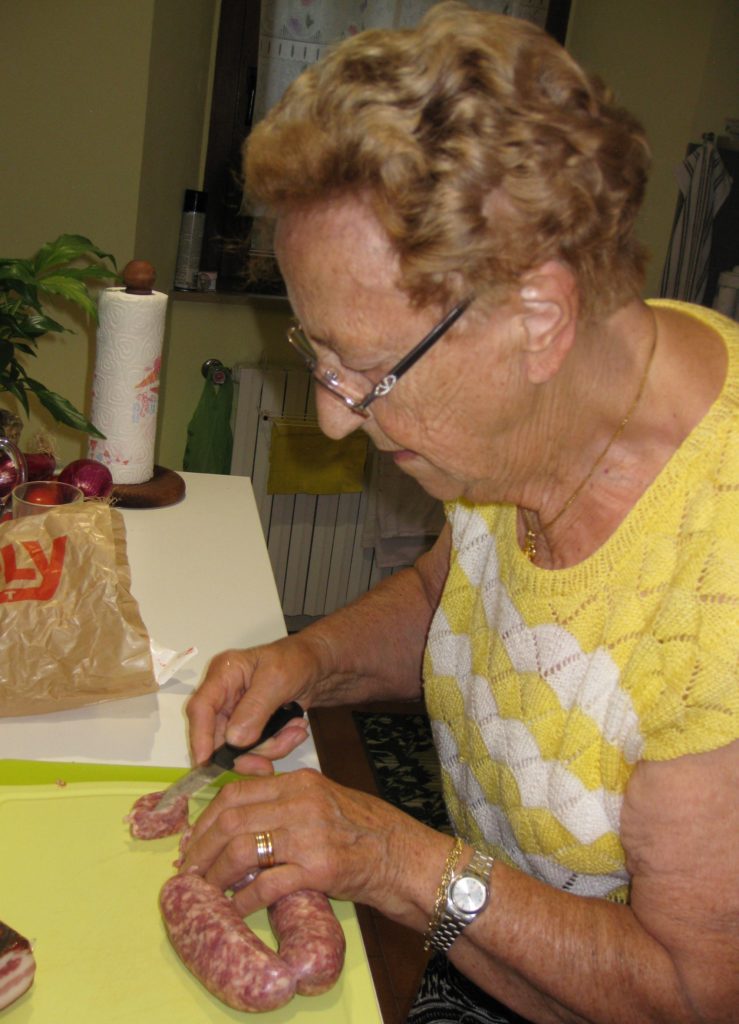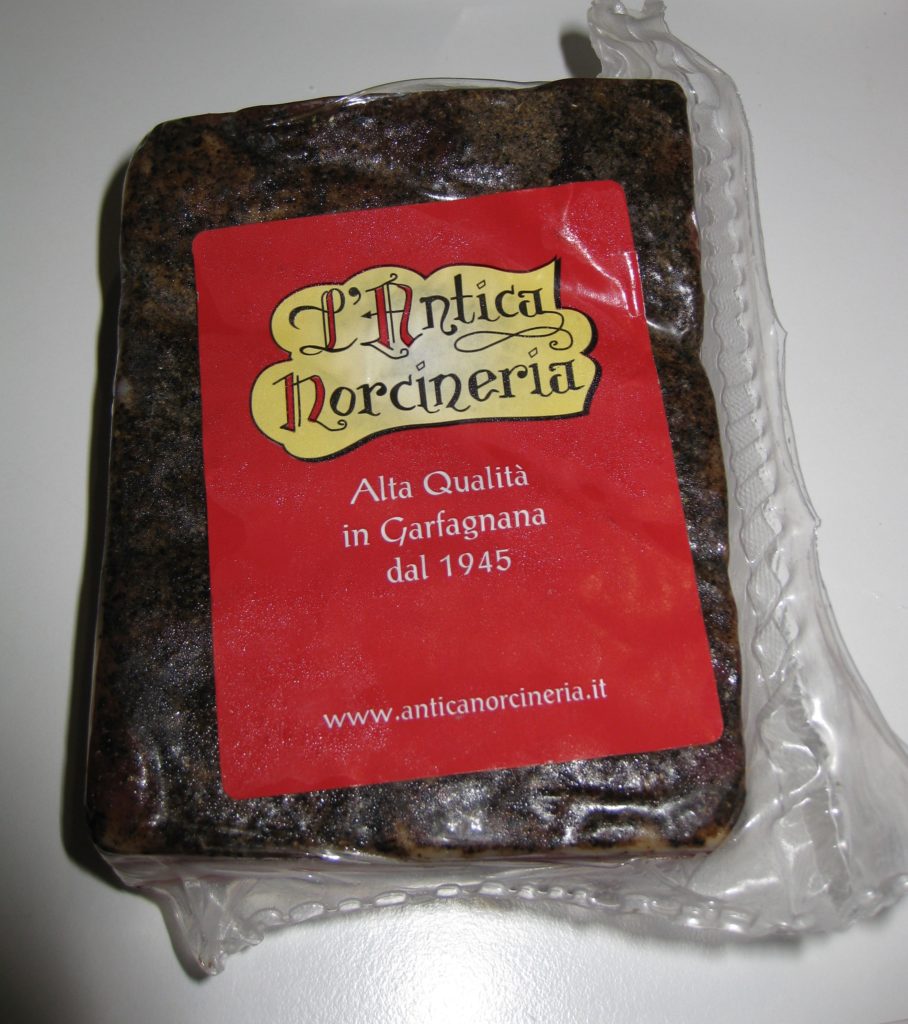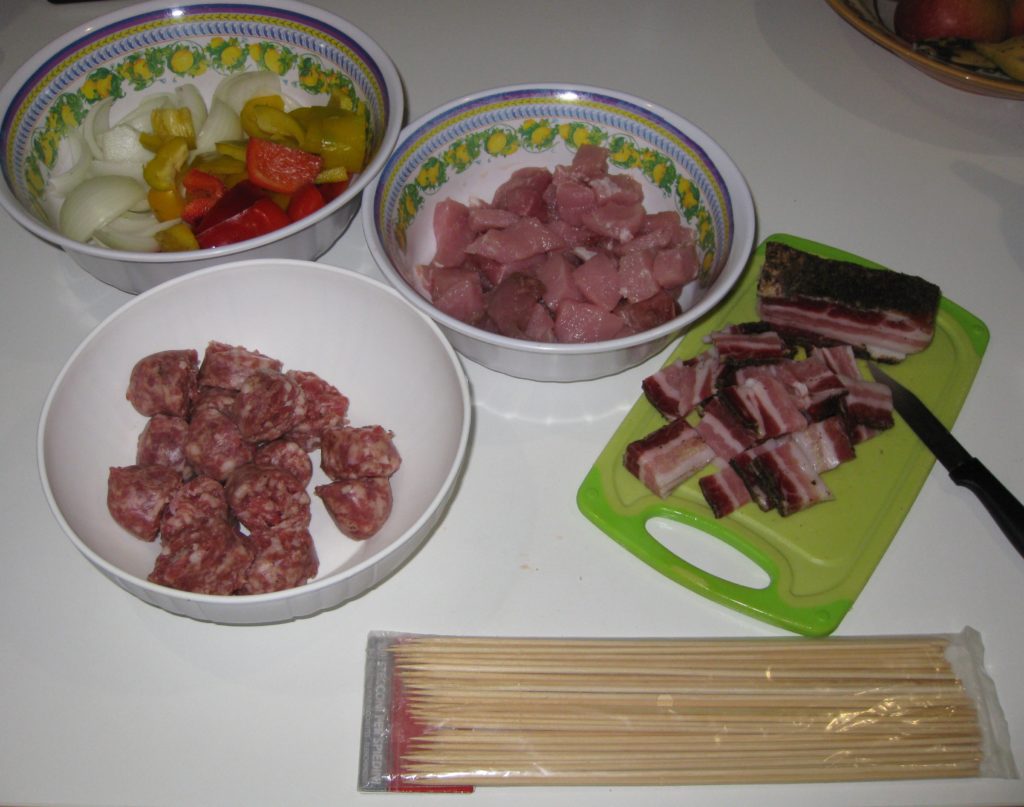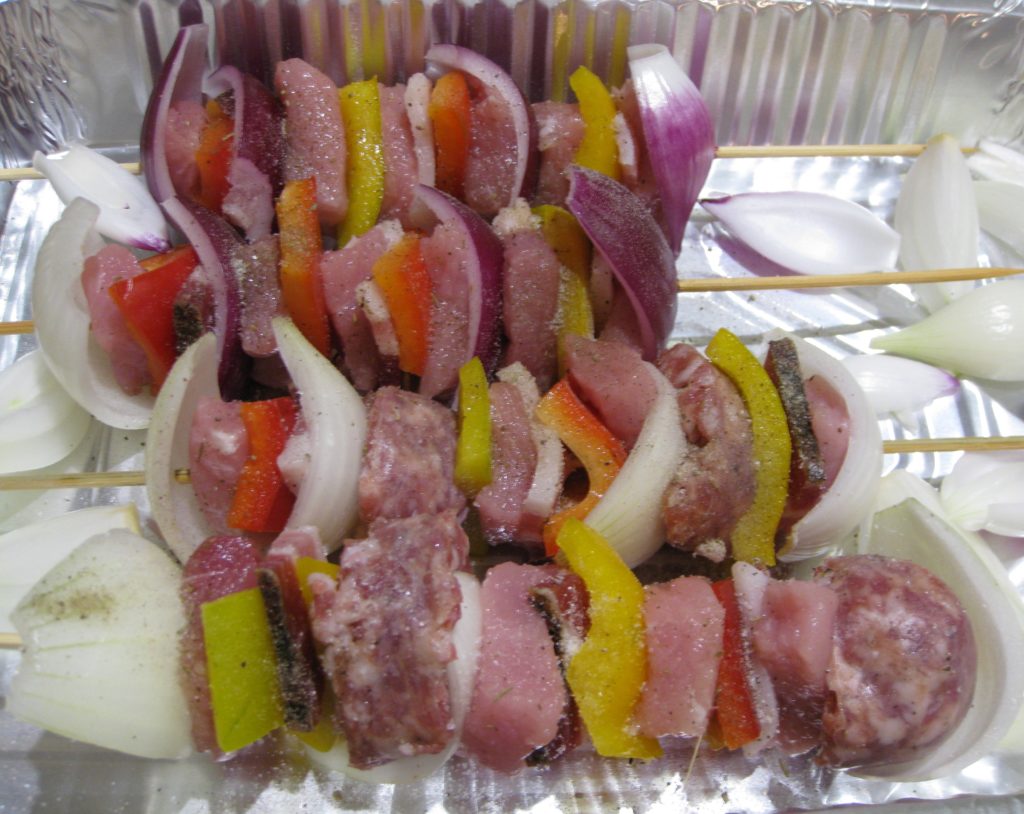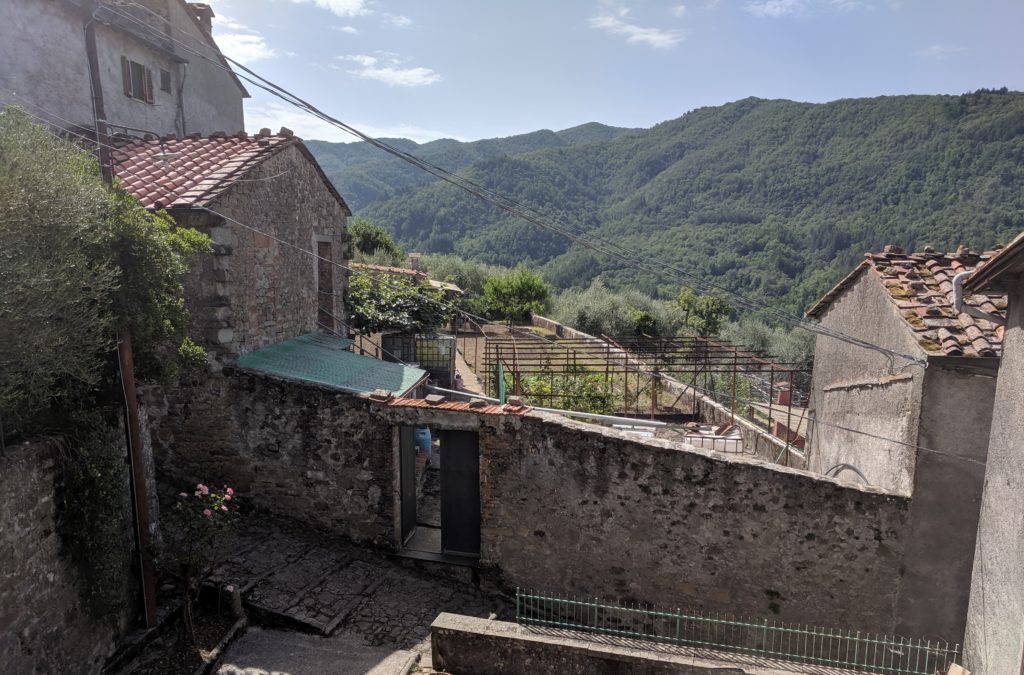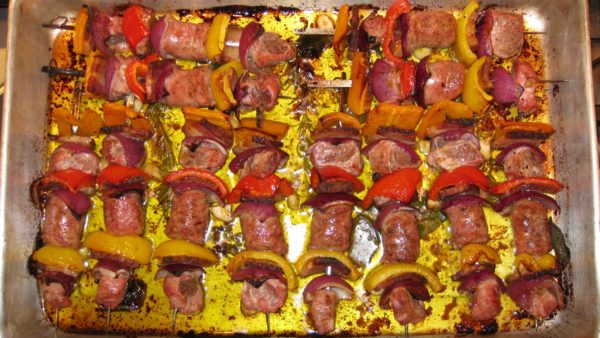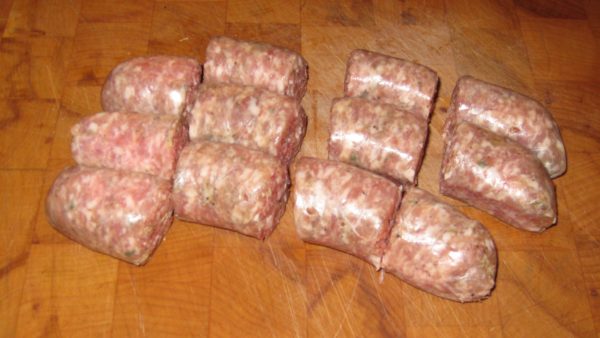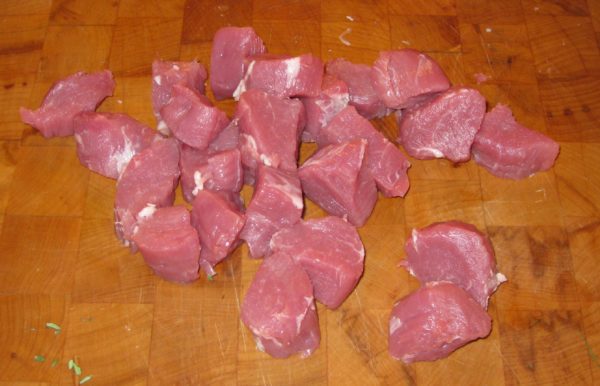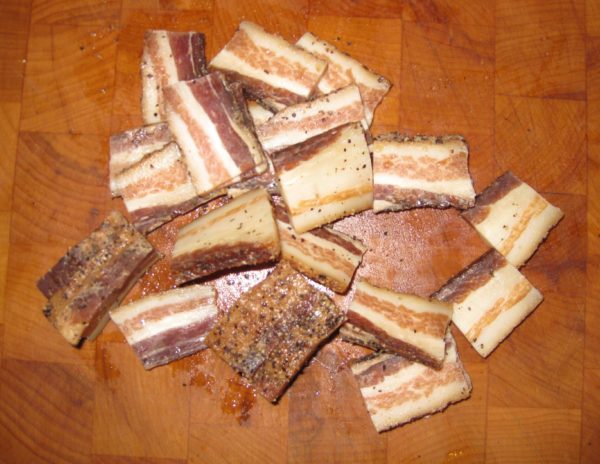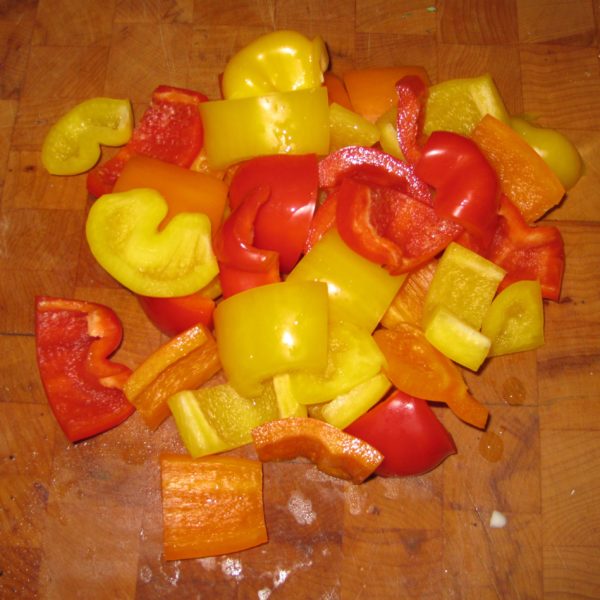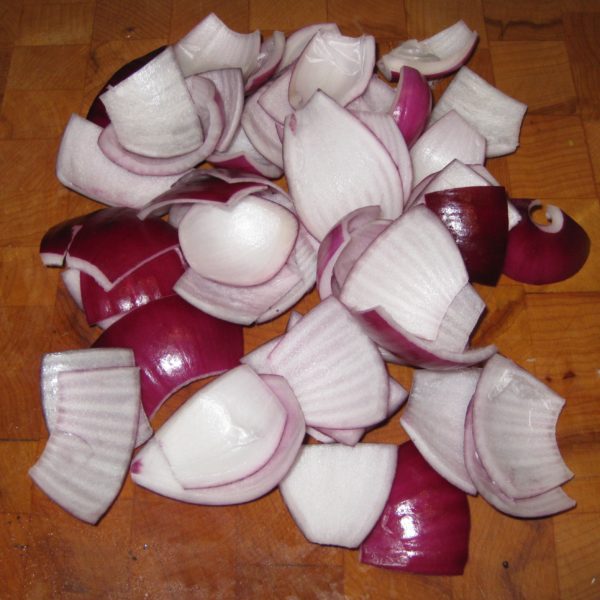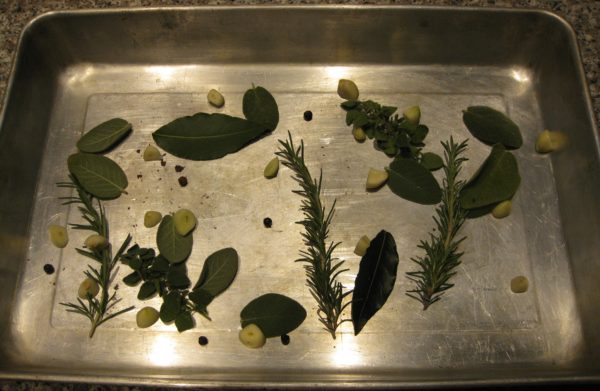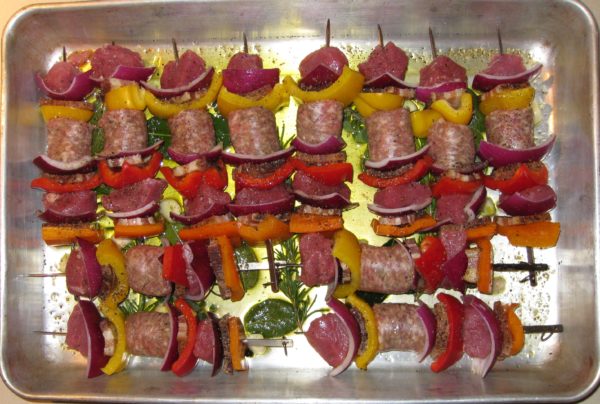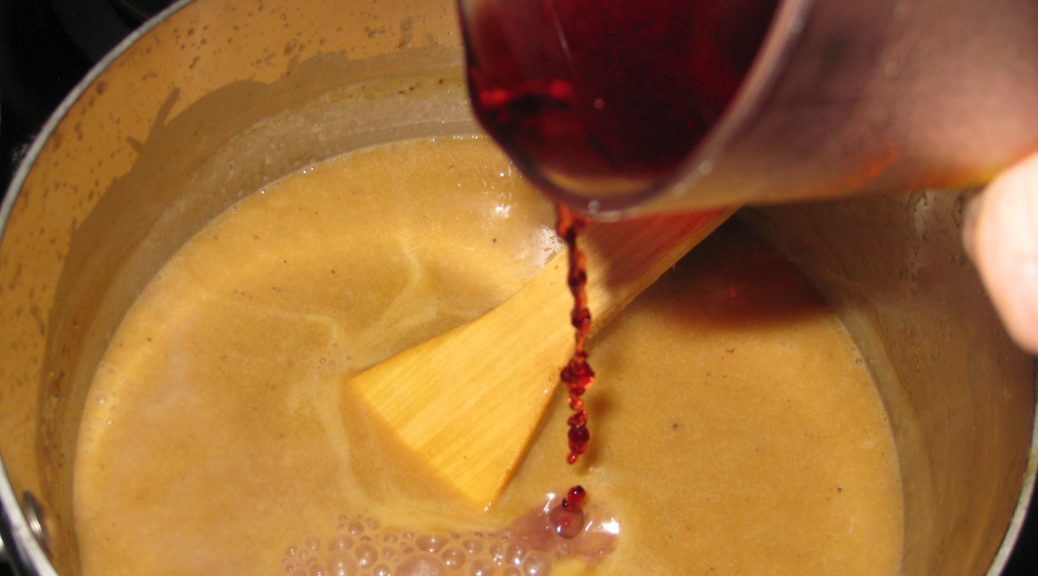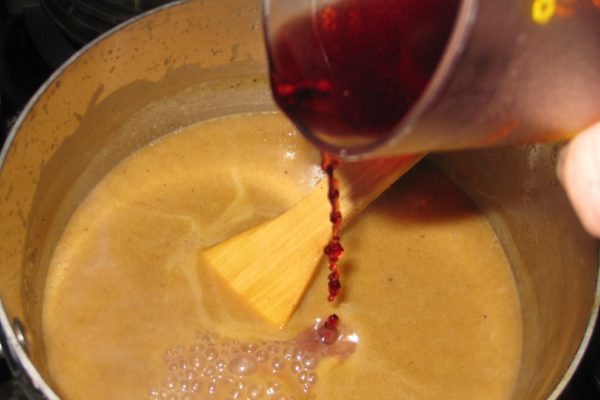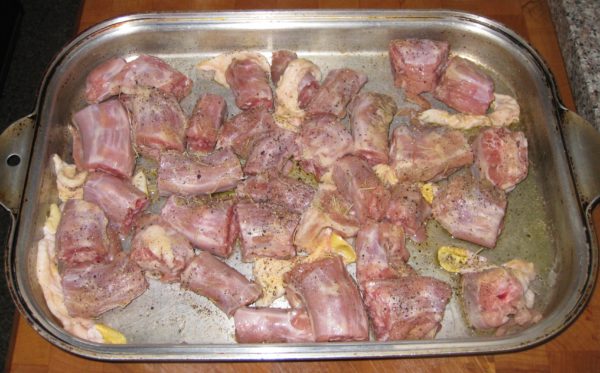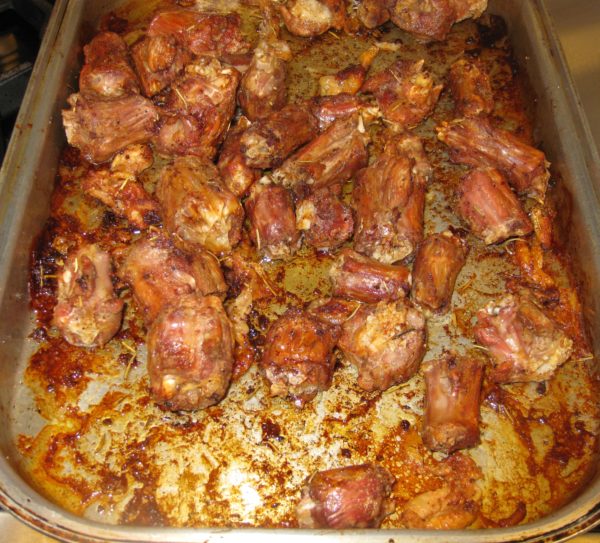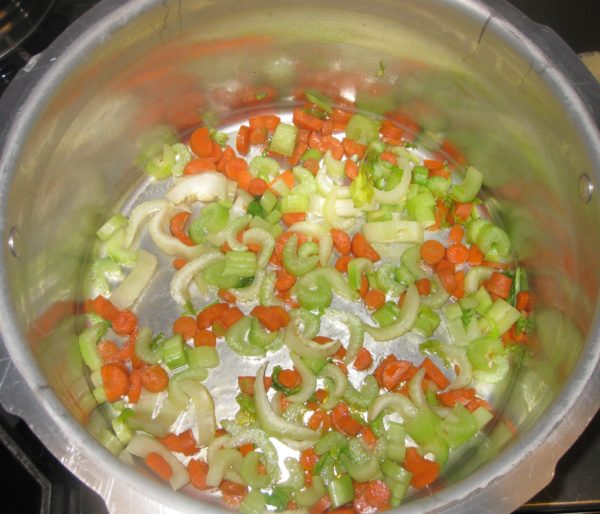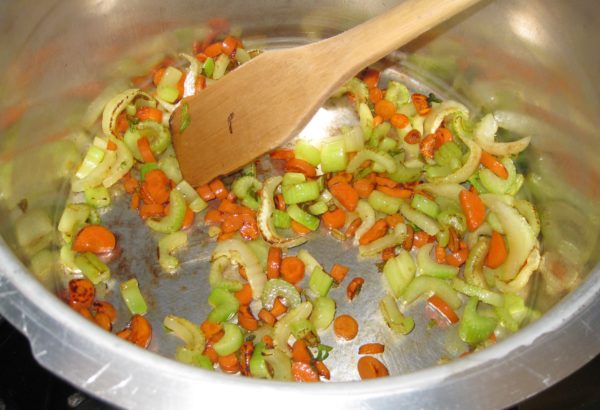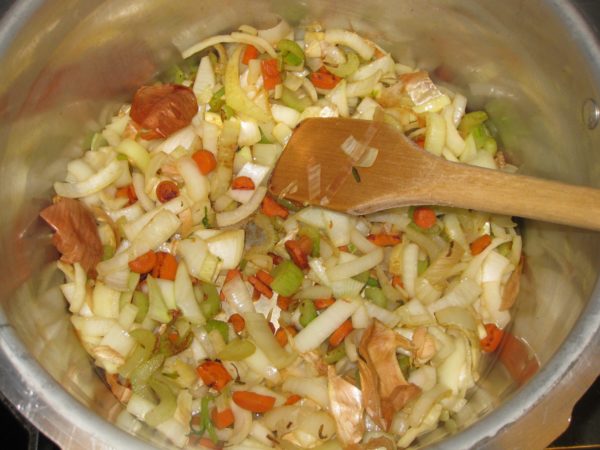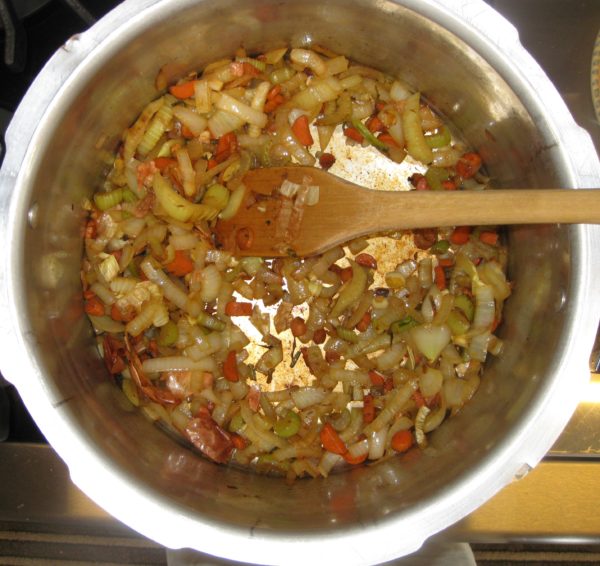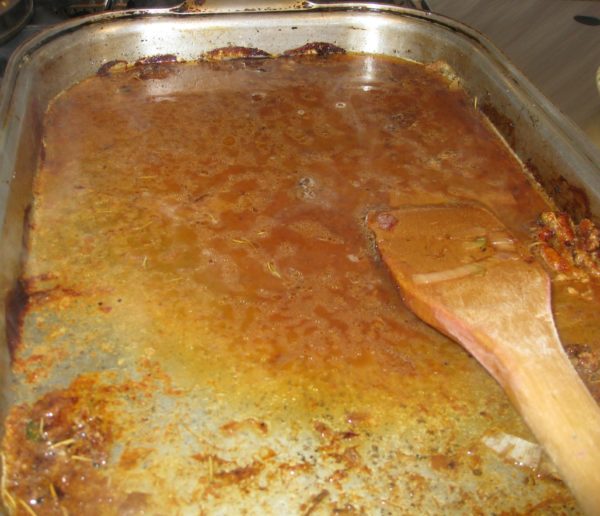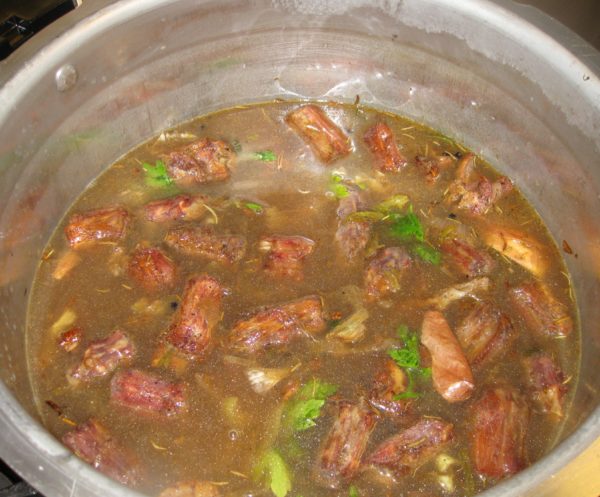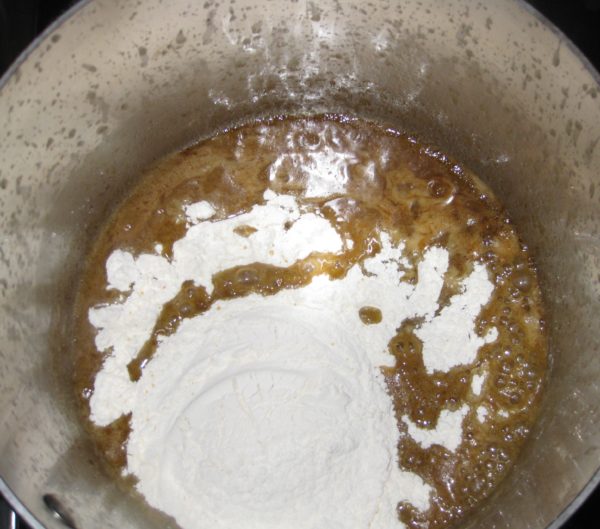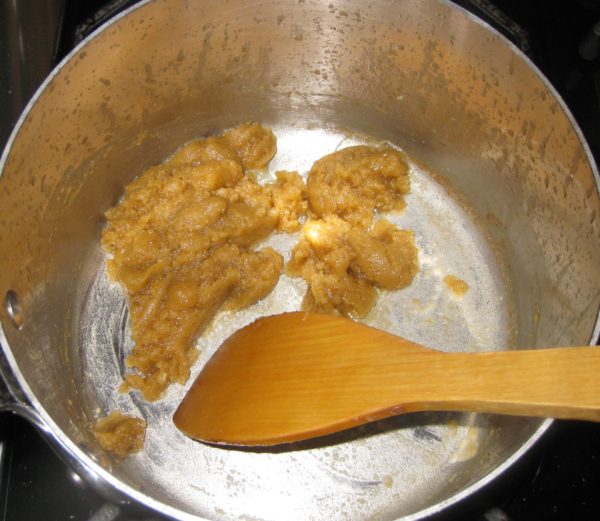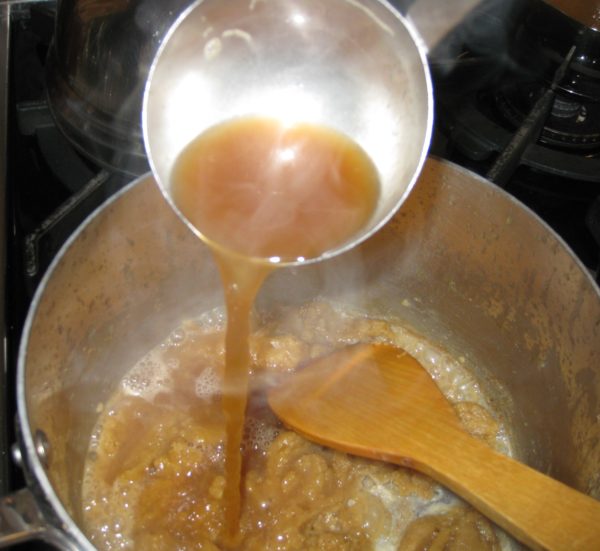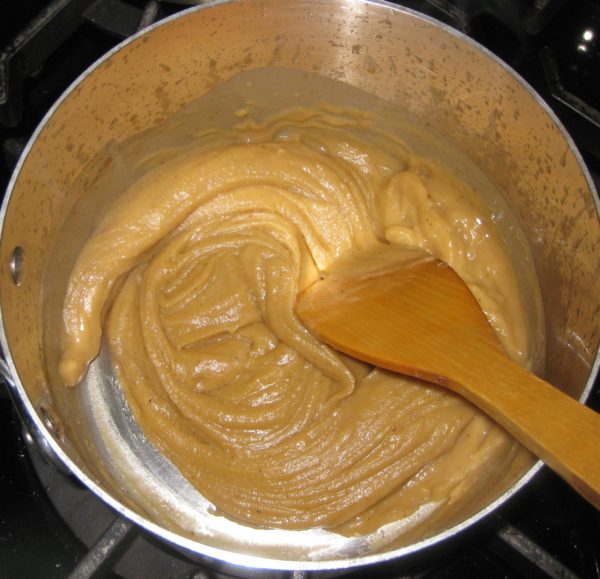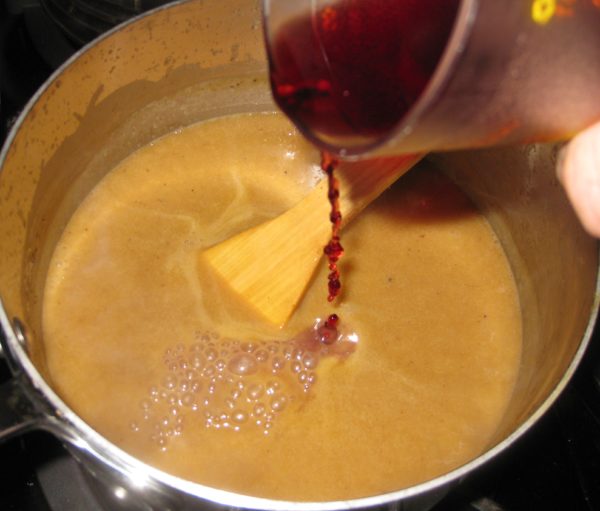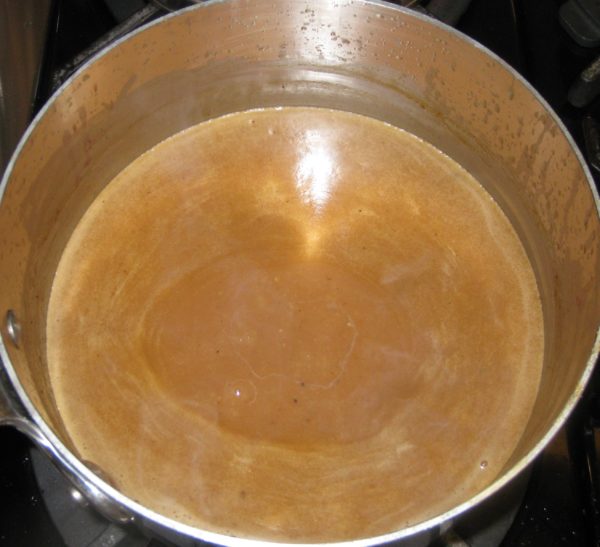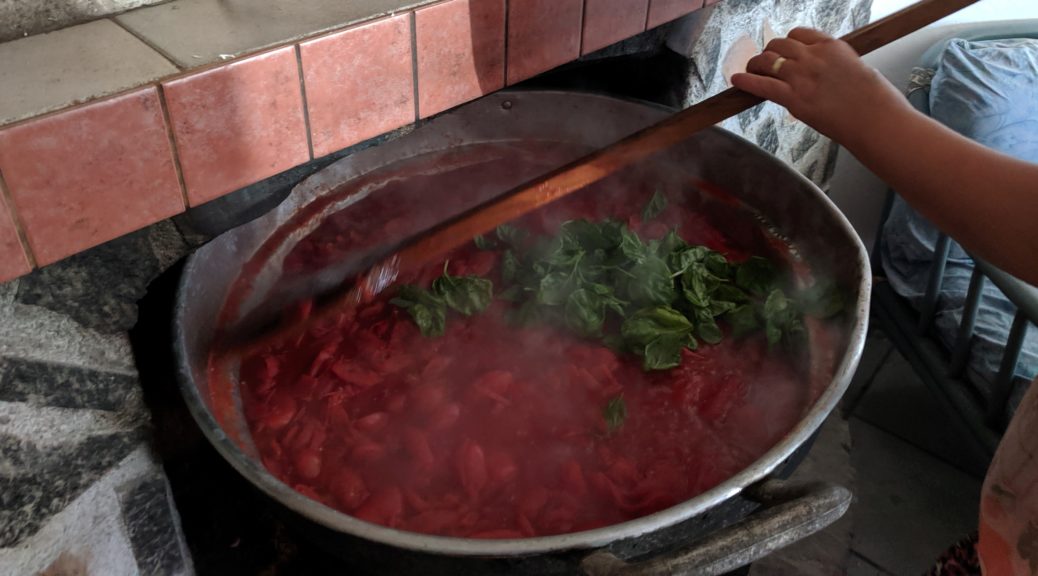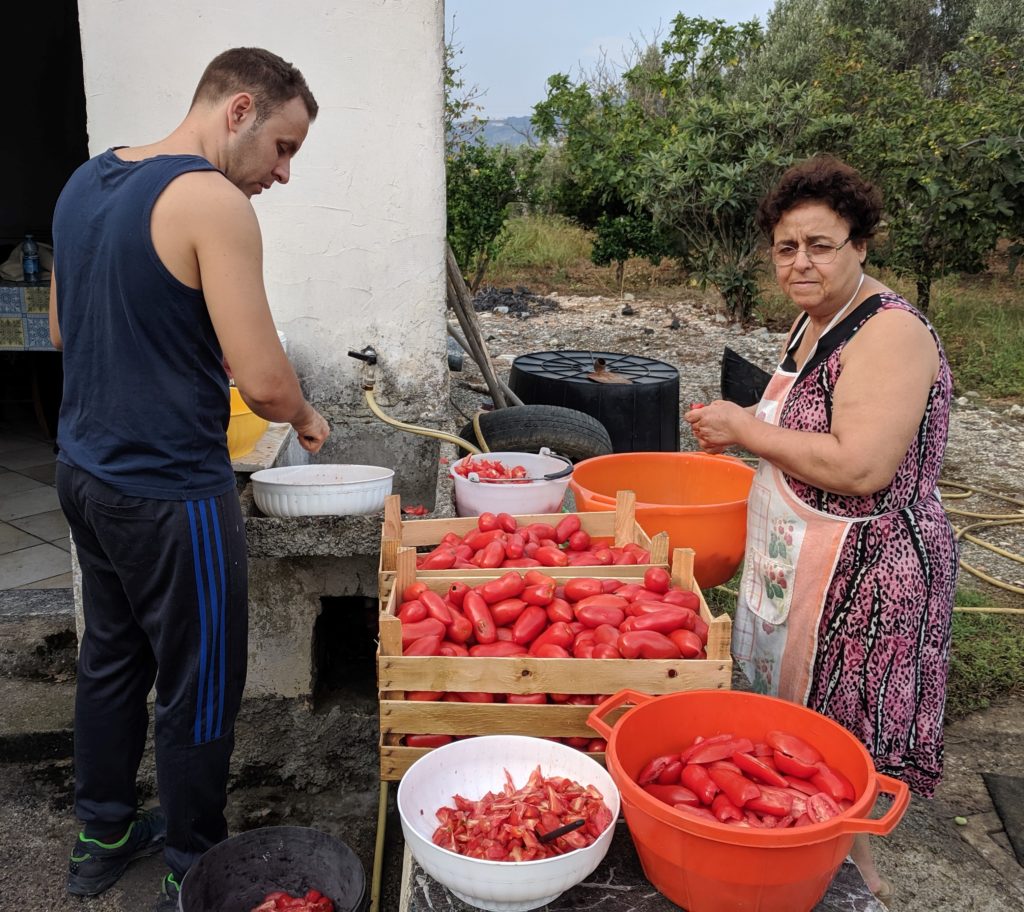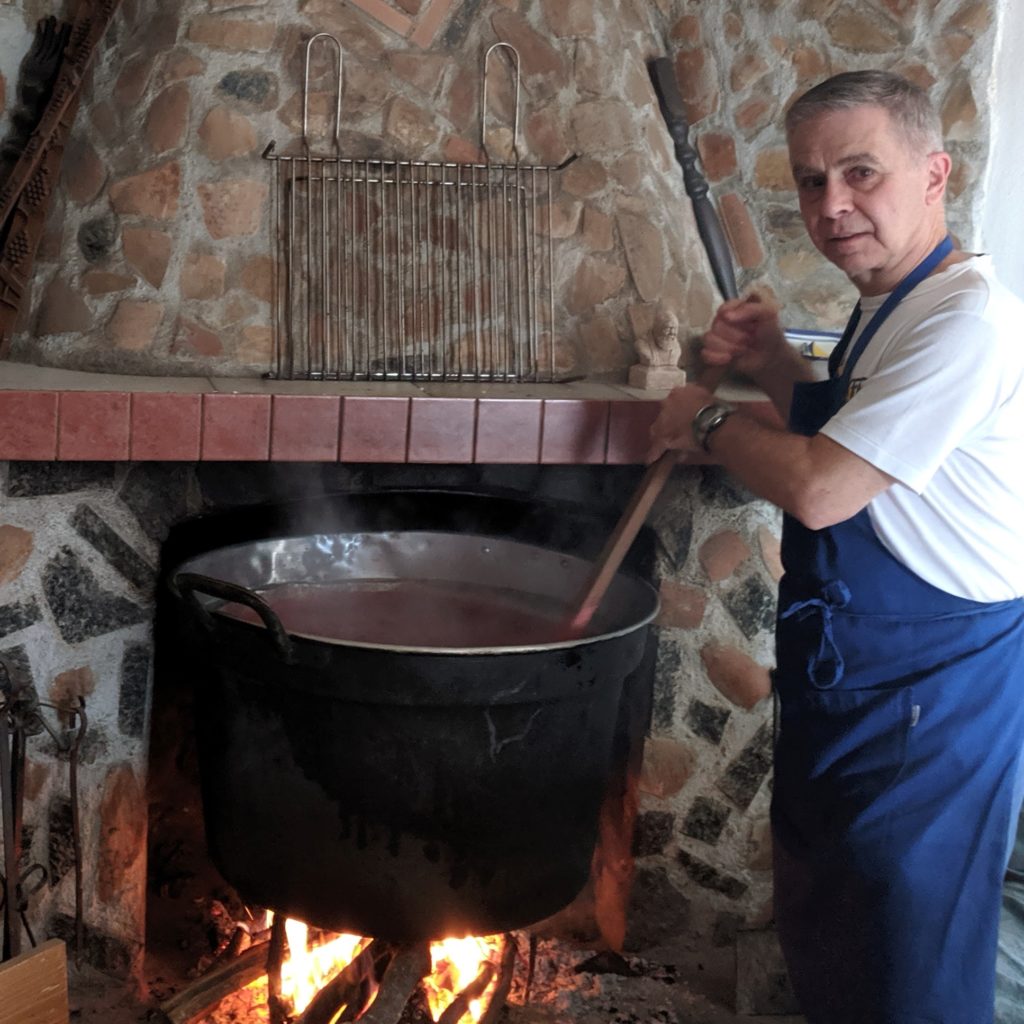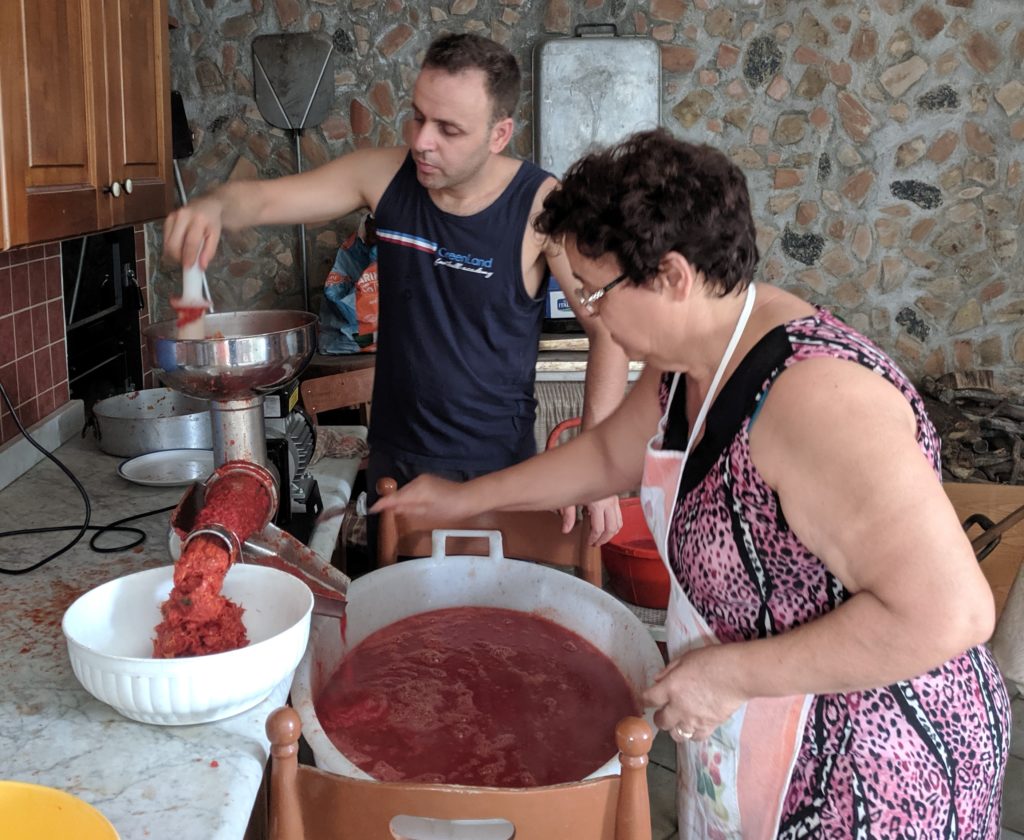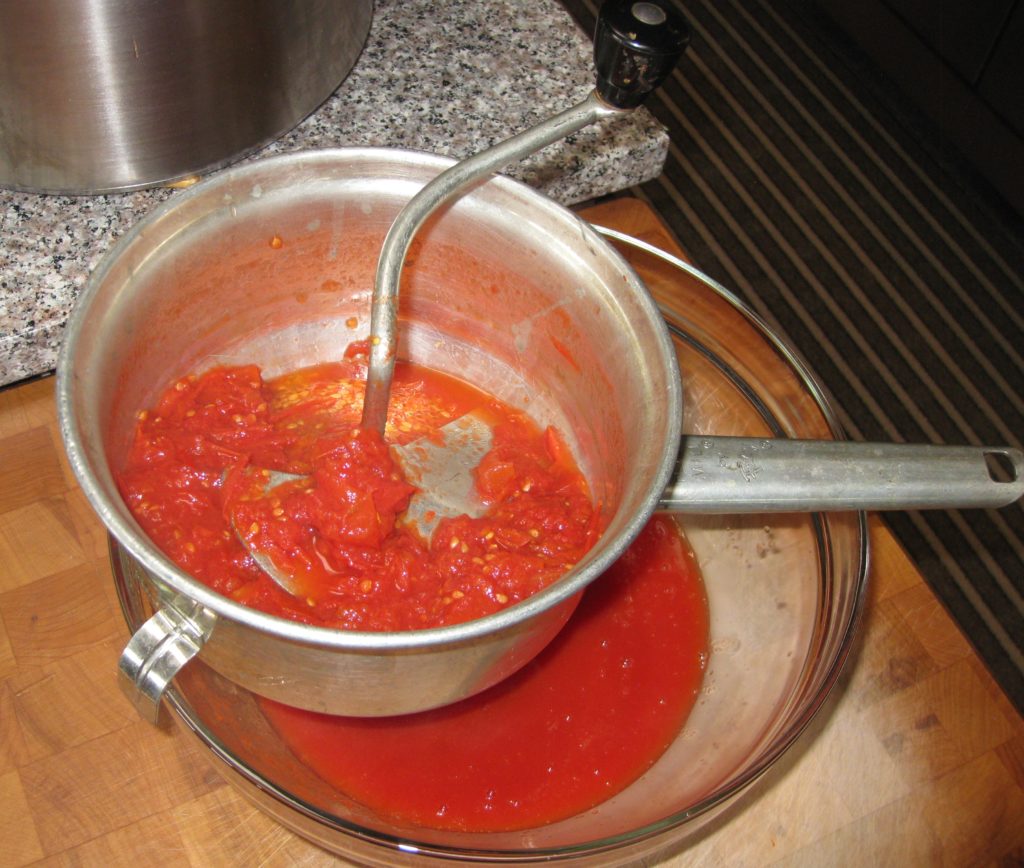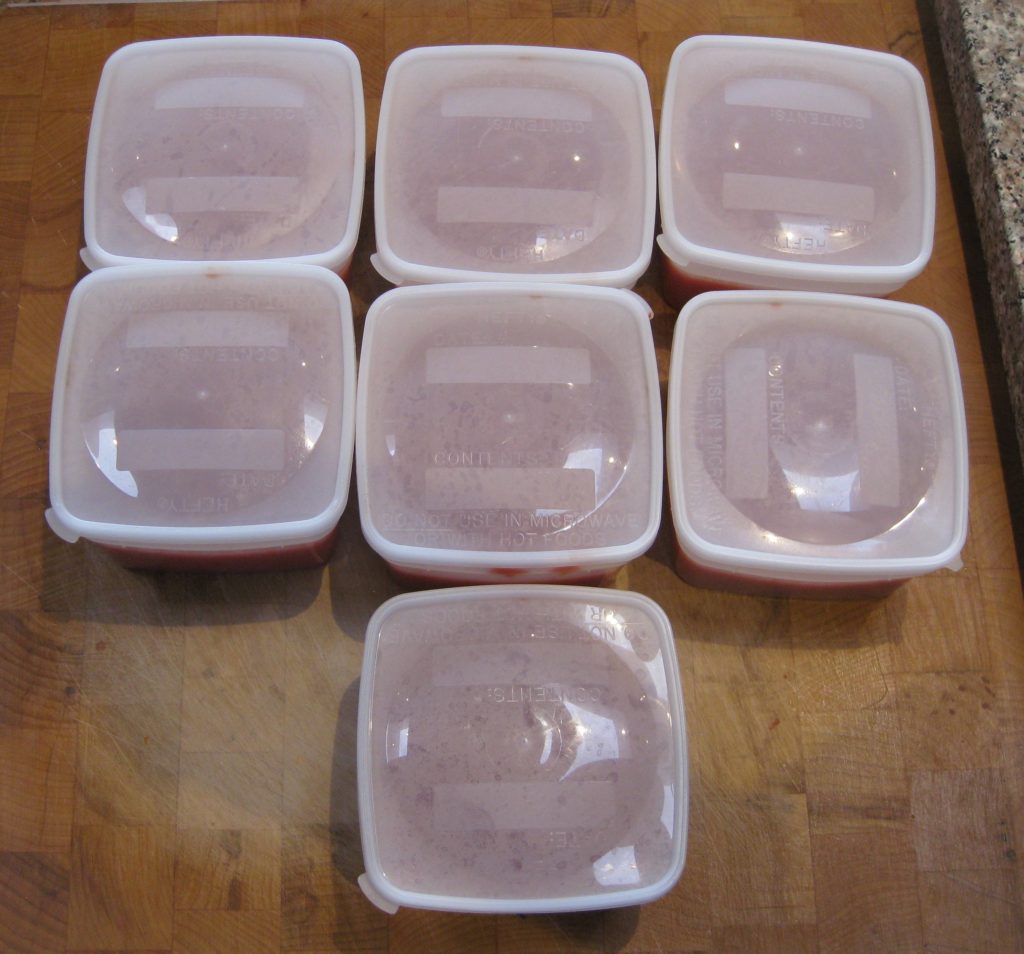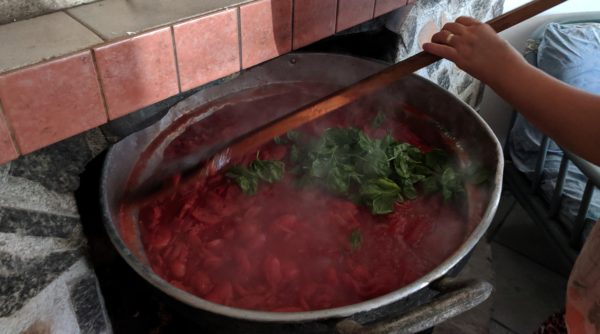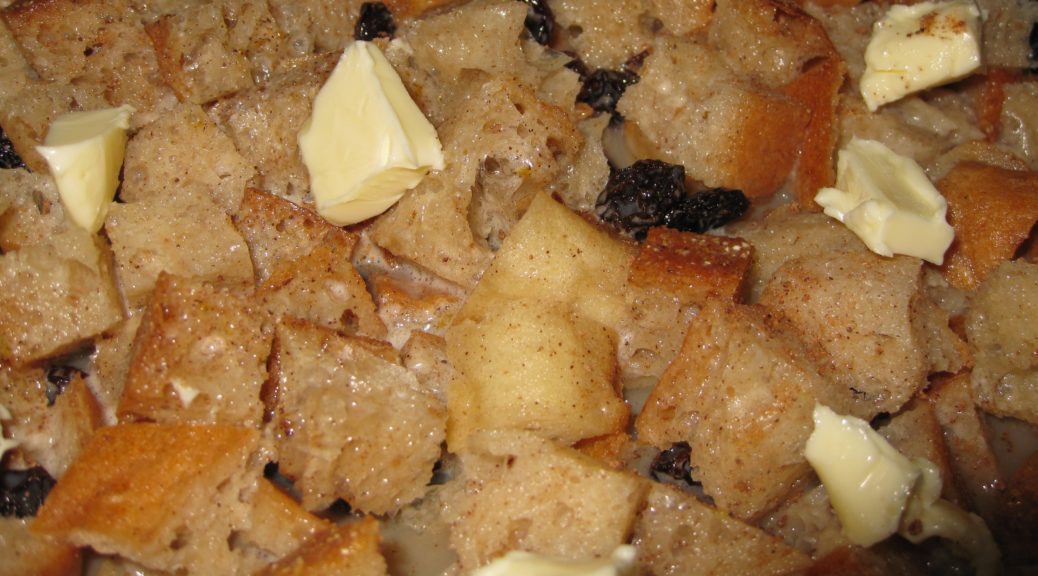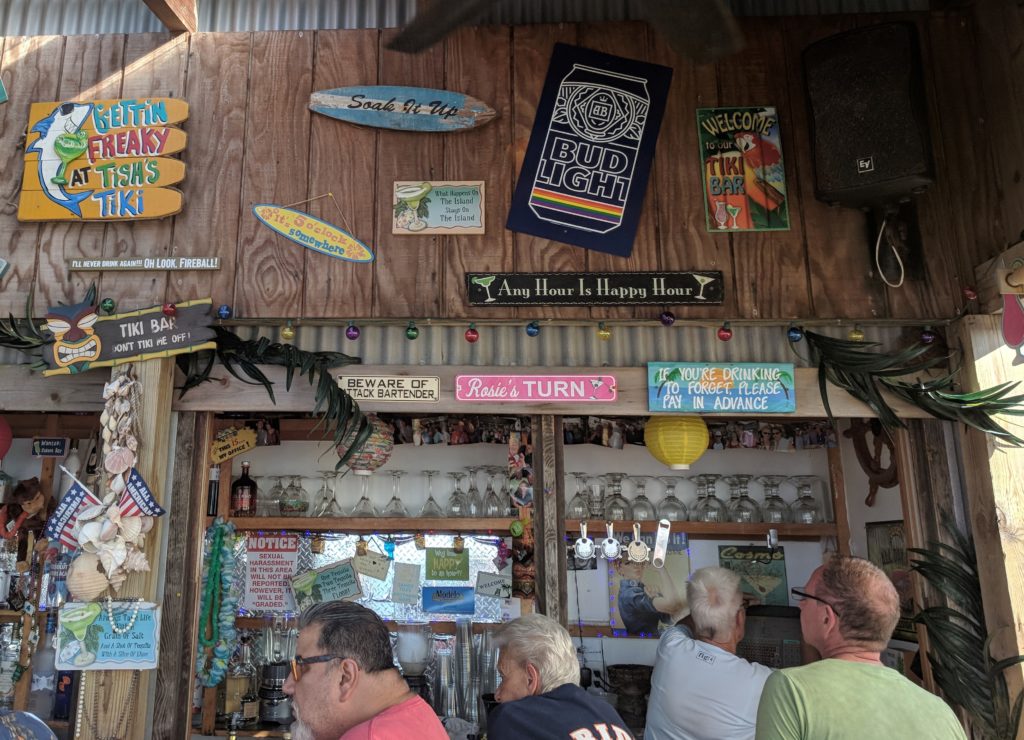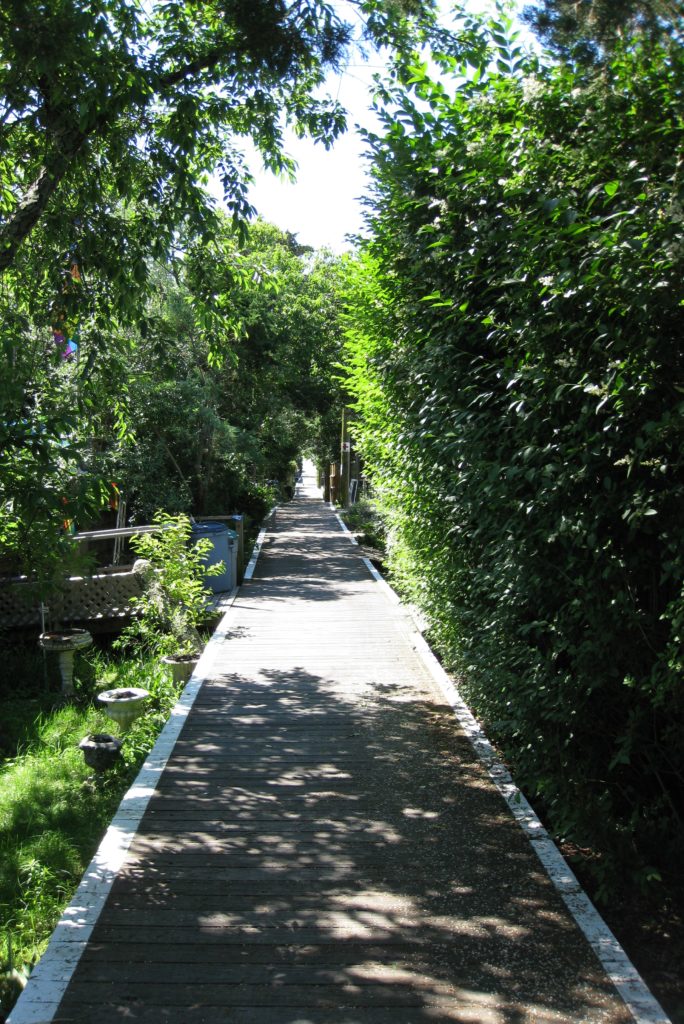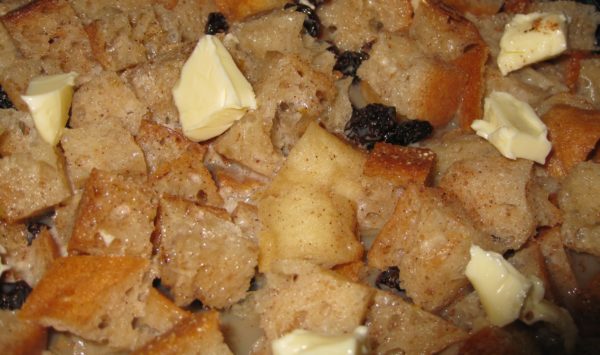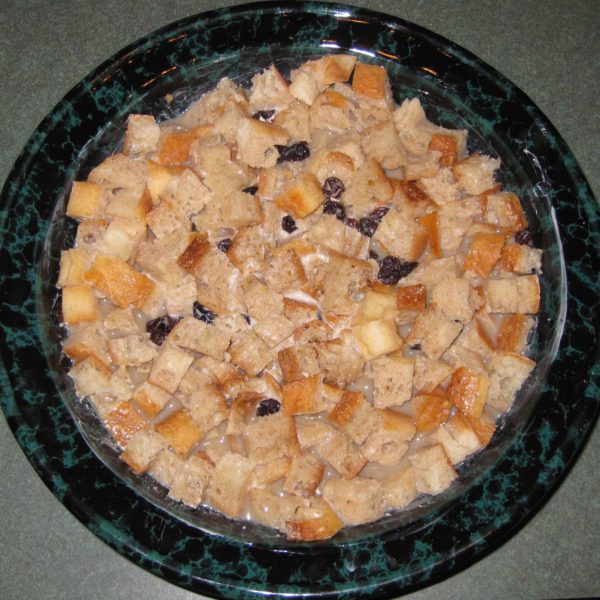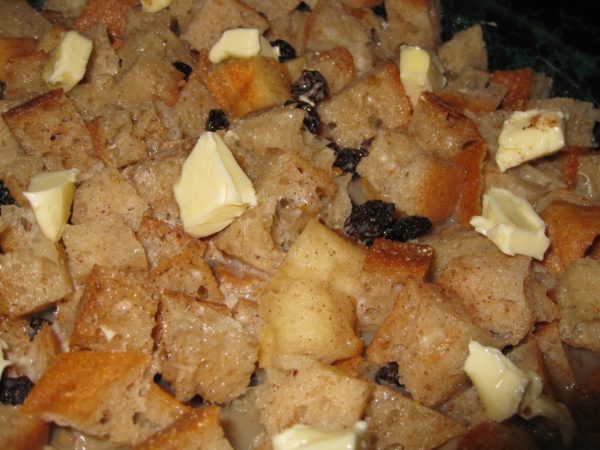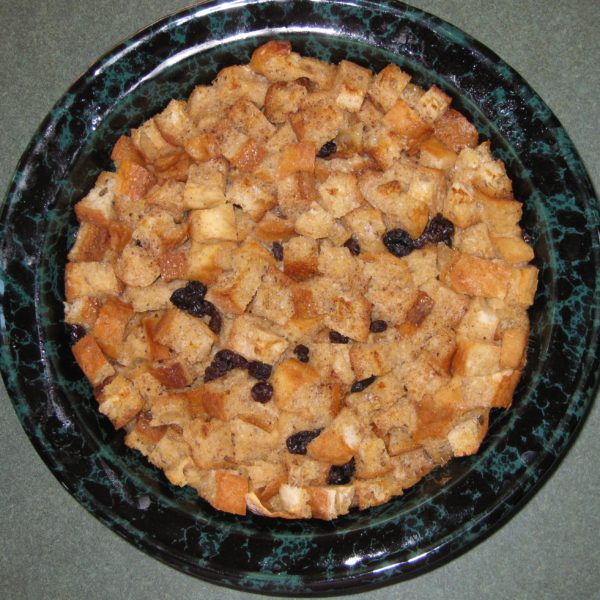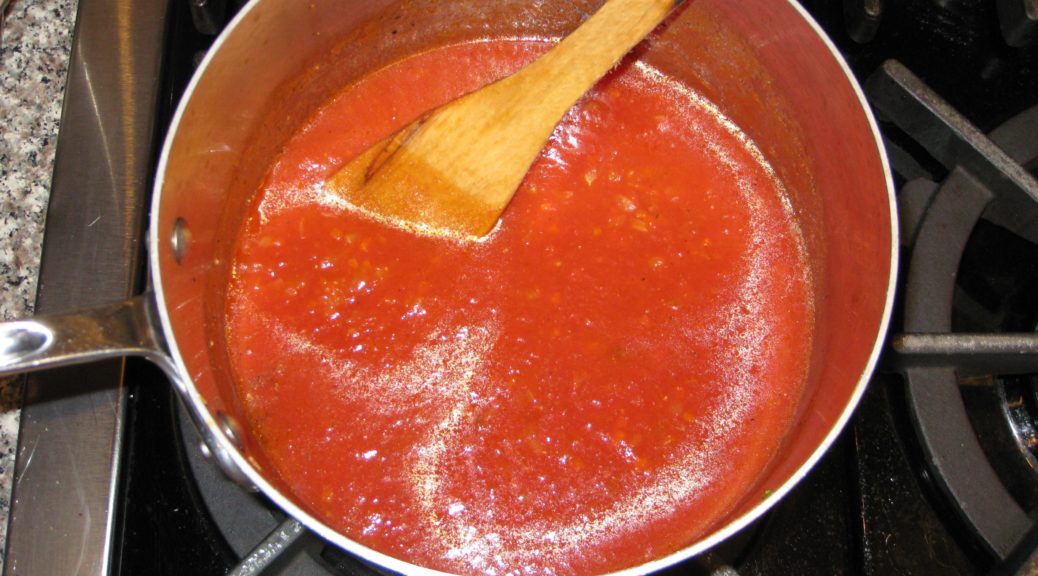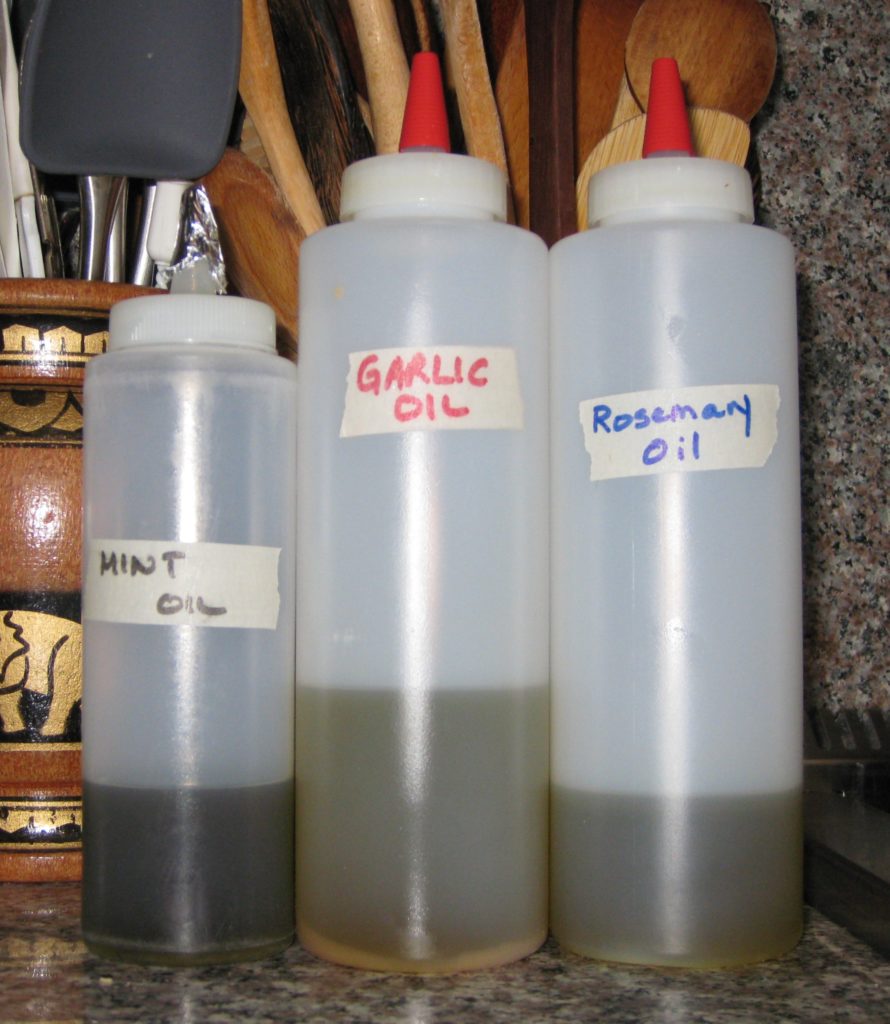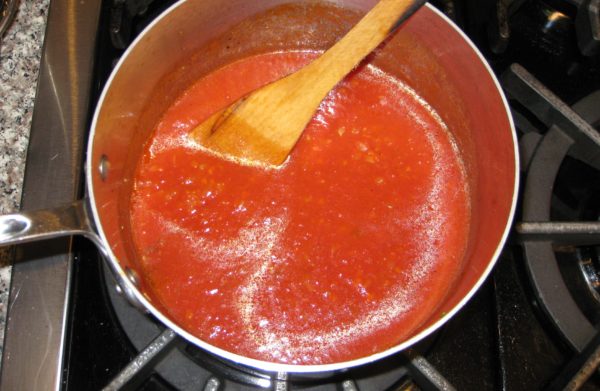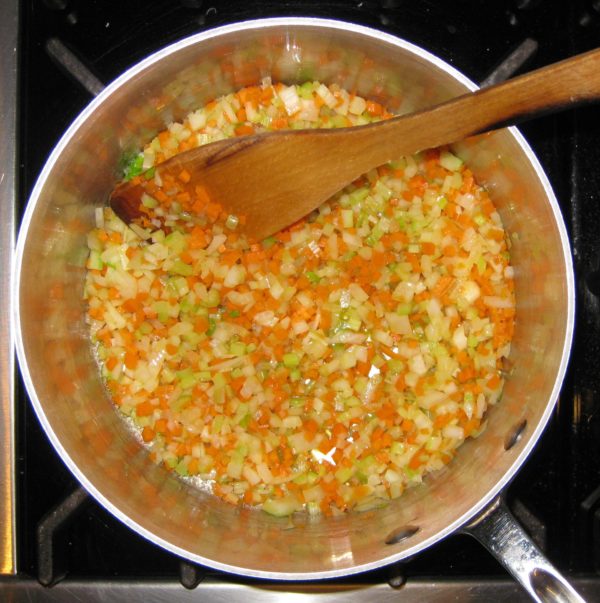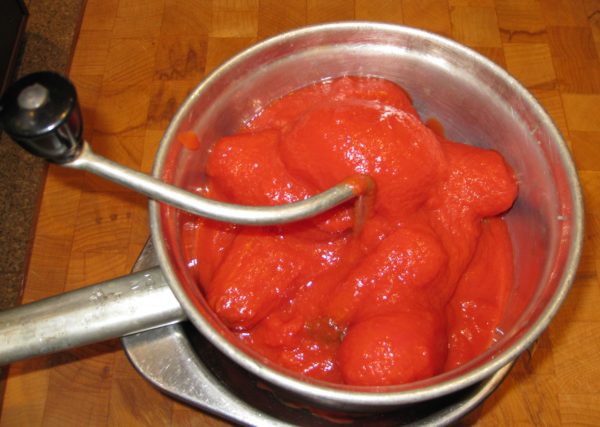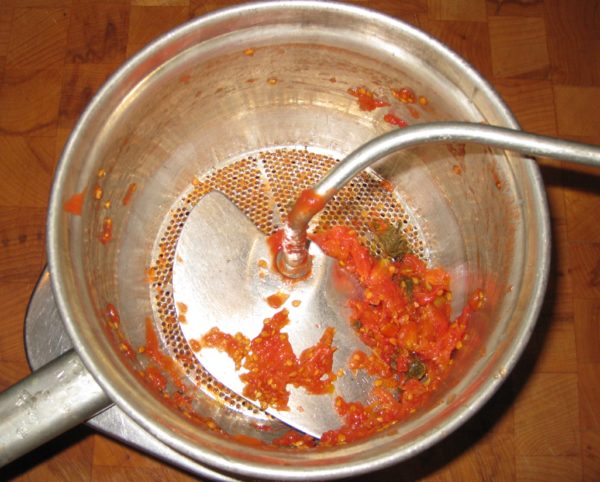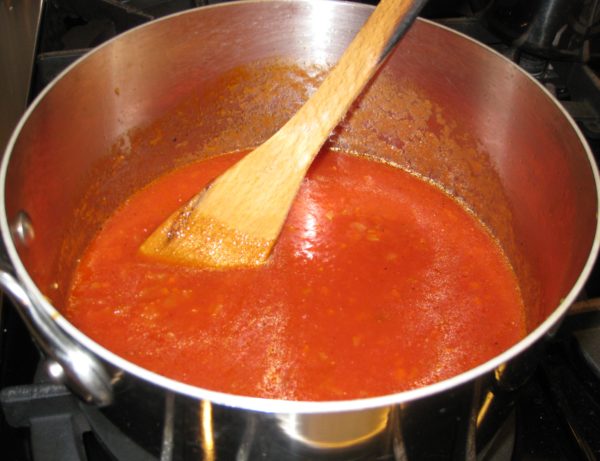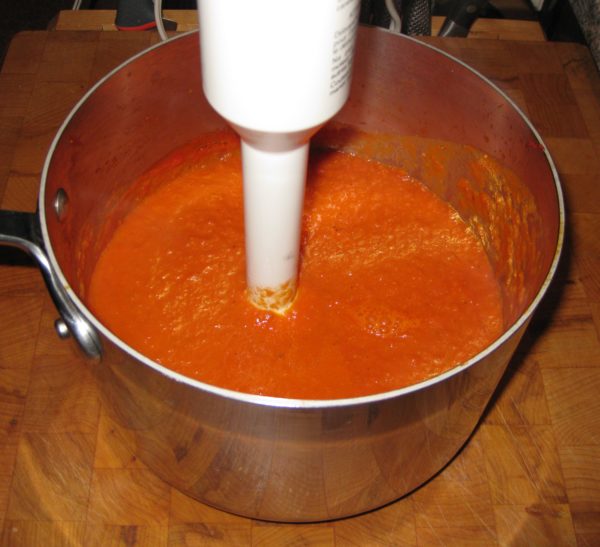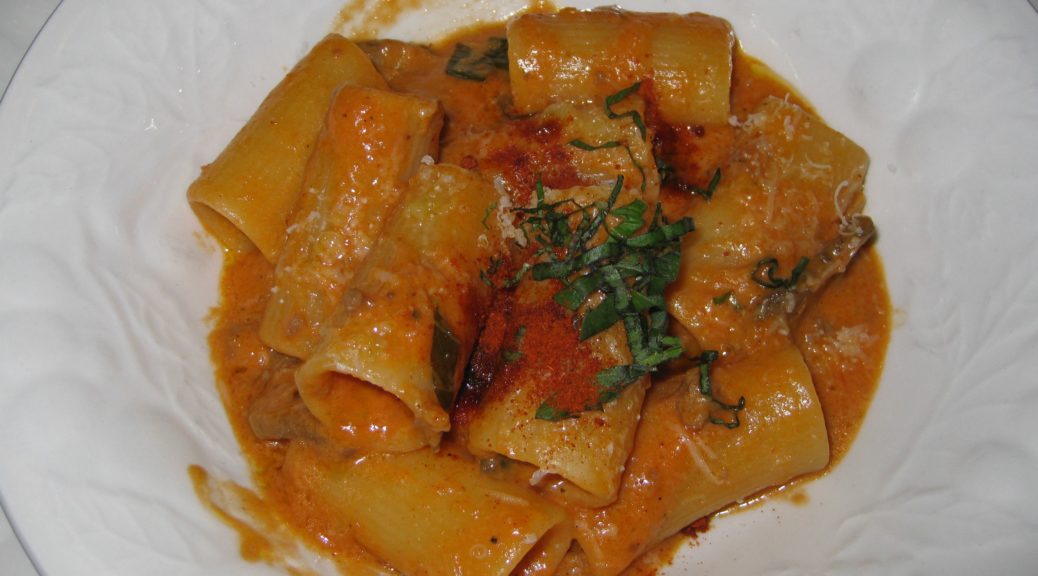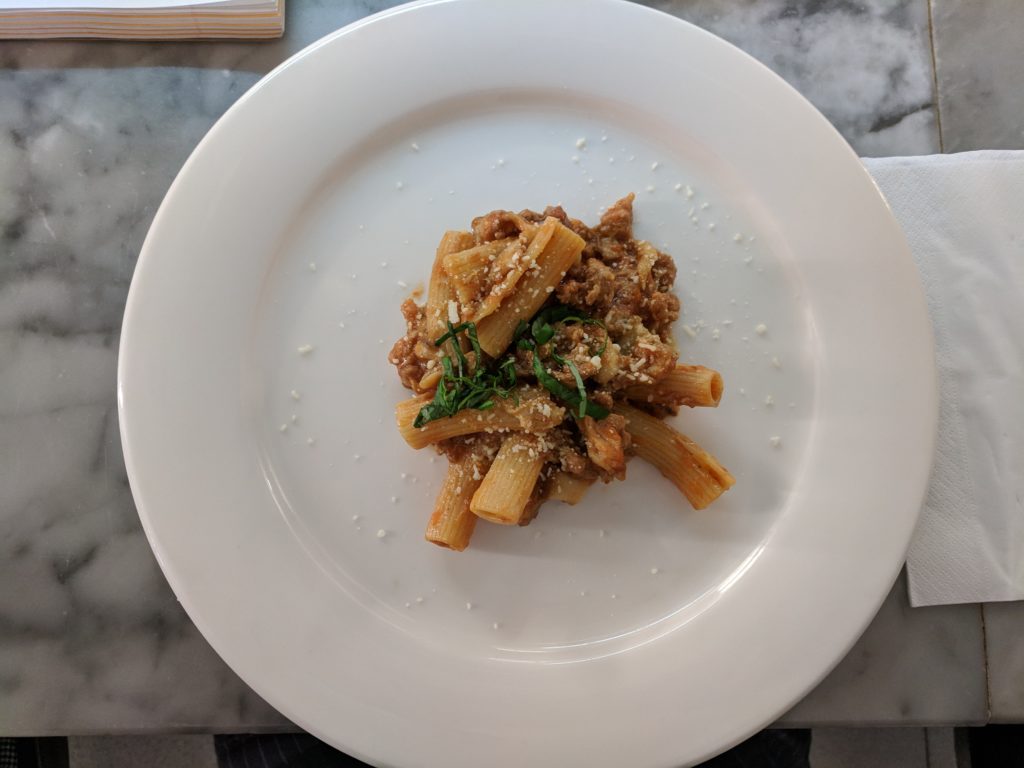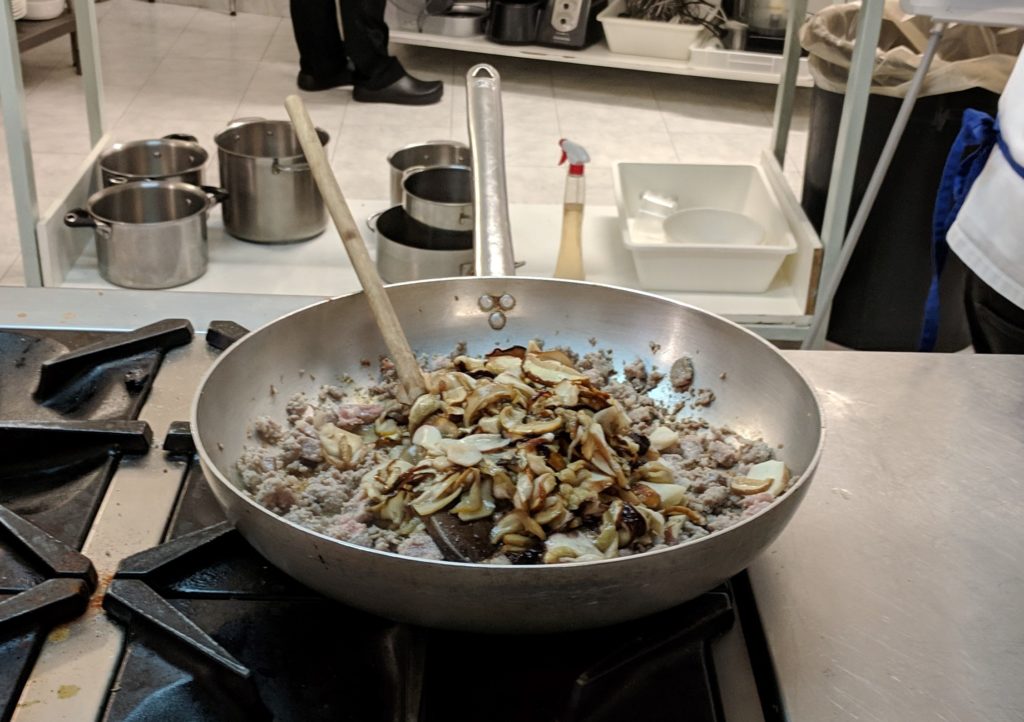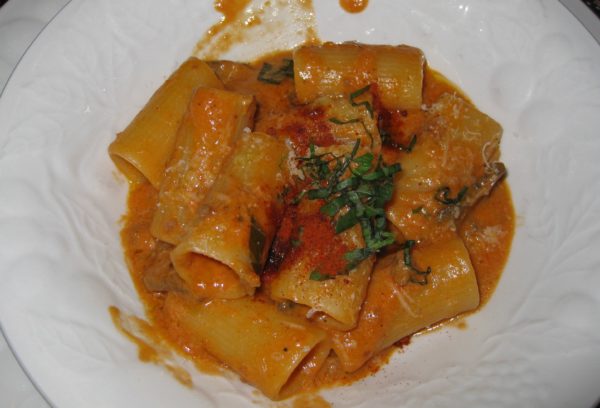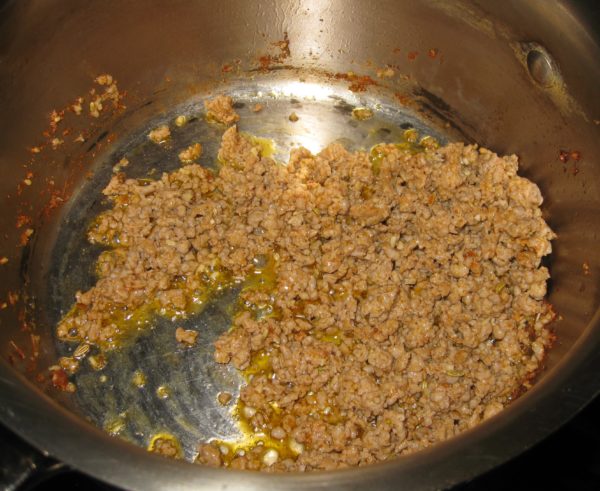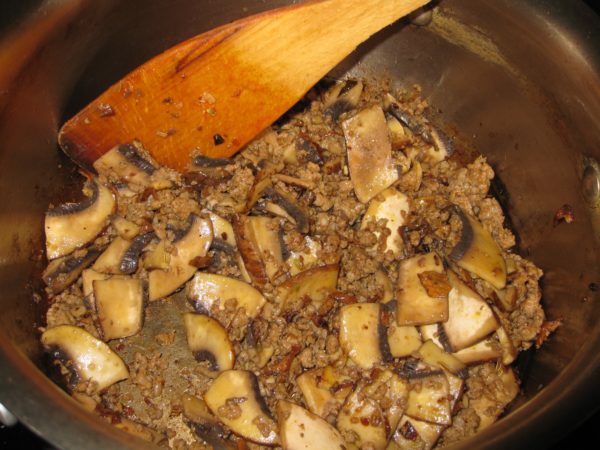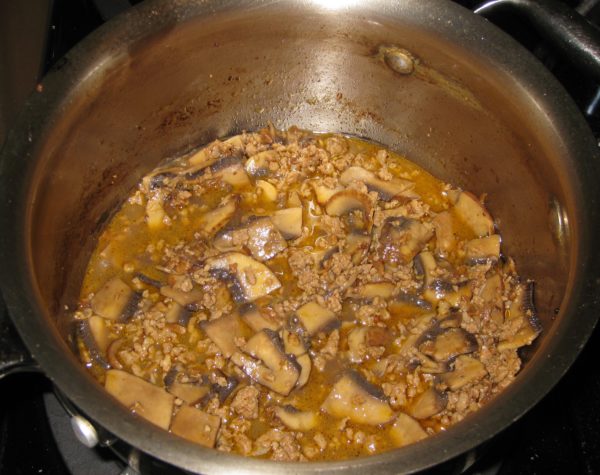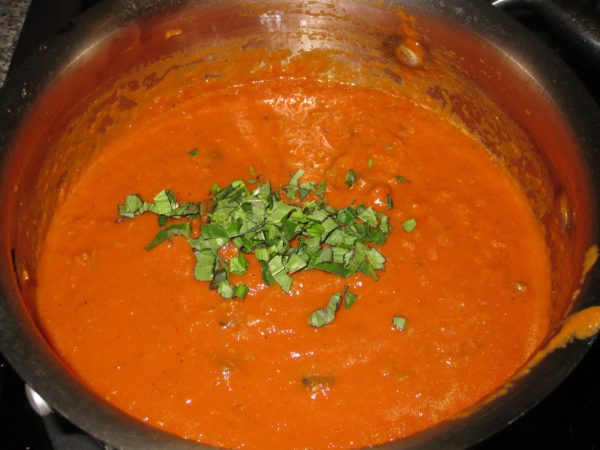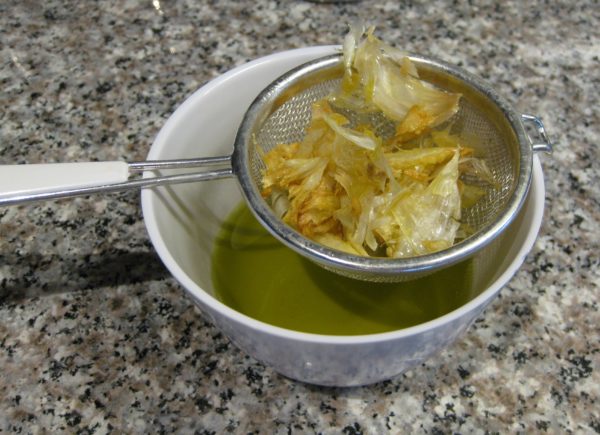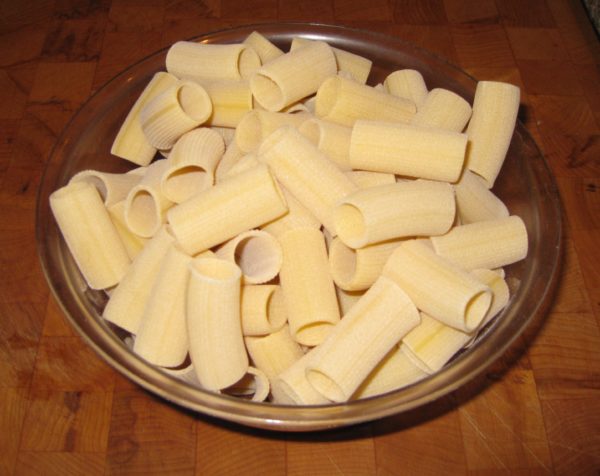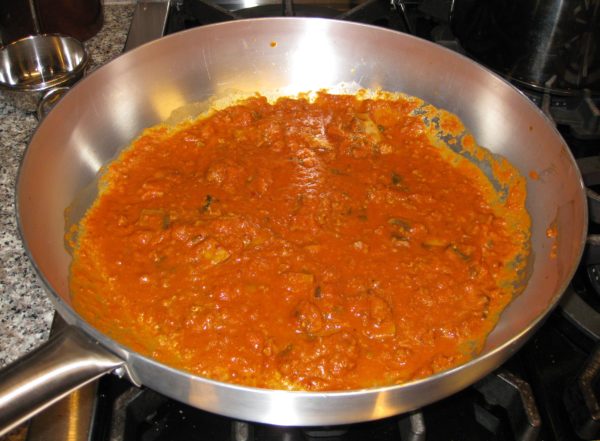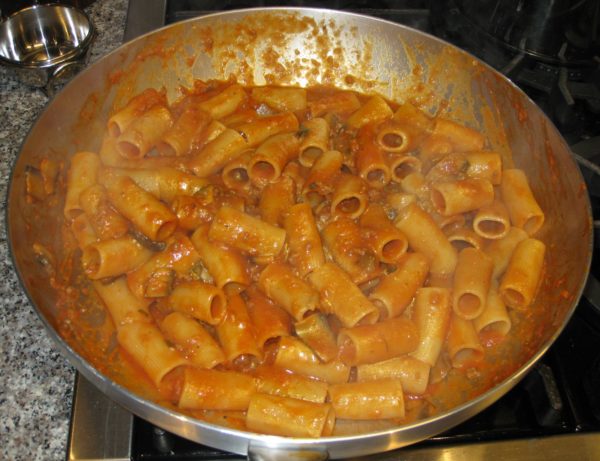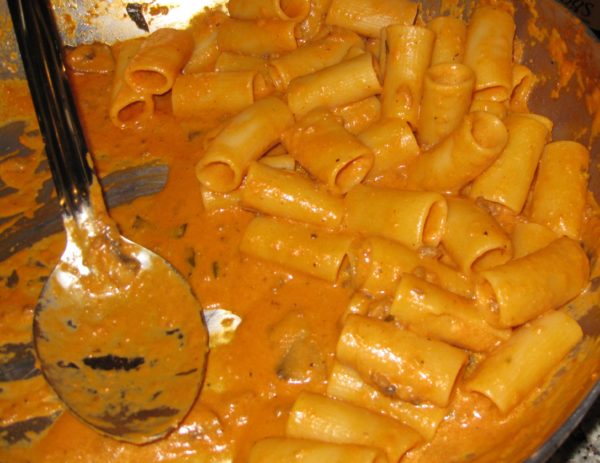January 15, 2020
I will forever remember Ferragosto as the day the music died.
Ferragosto is celebrated on the fifteenth of August throughout Italy. Originating during the Roman Empire, apparently in 18 BCE by Emperor Augustus, Ferragosto was originally held on August 1st. Ultimately, the Catholic Church moved the date to August 15th to coincide with the Assumption, a “holy day of obligation,” thus imposing a secular holiday on a religious holy day.
Ferragosto is a day to feast. It is also the day that the late-night revelry in the piazza of Bagni di Lucca comes to an end.
Join our mailing list and you’ll never miss a recipe again!
Those of you who have been following my blog for a while know that I spent the month of August 2019 in Tuscany cooking with Great Aunt Fidalma.
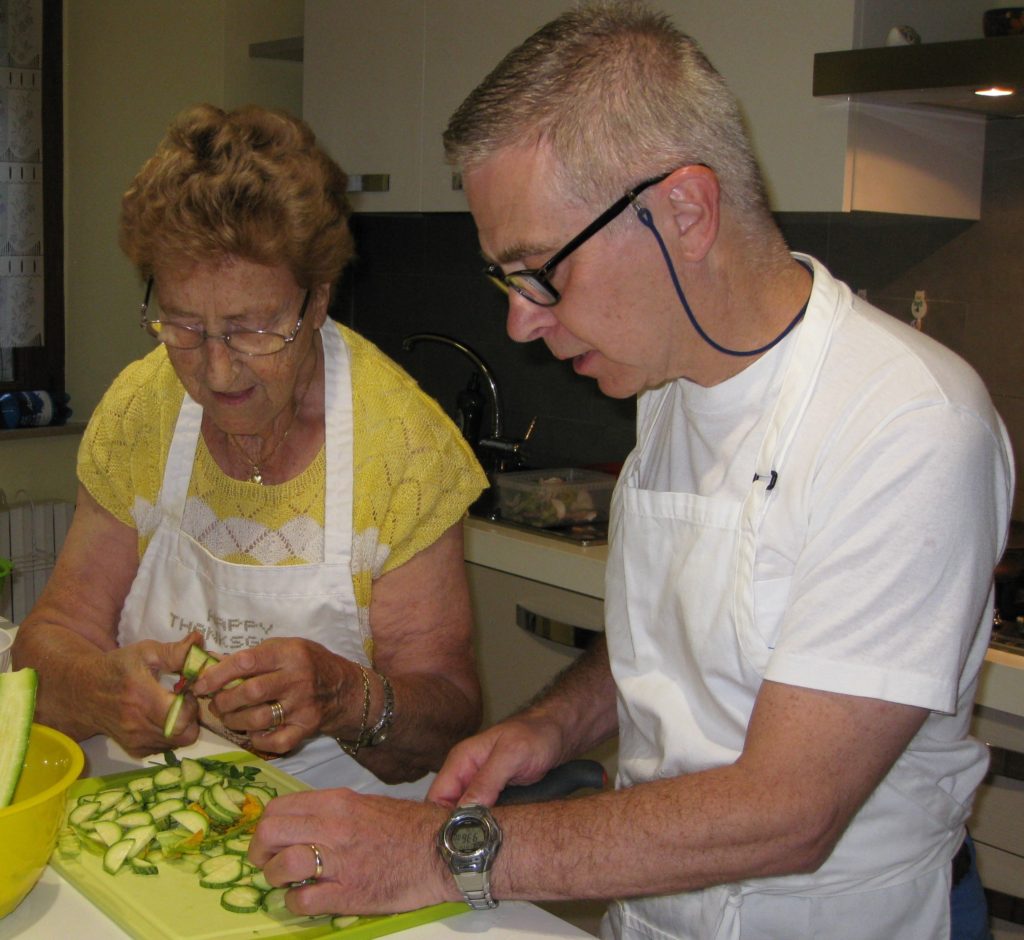
I rented a charming little apartment overlooking the piazza in Bagni di Lucca, a town near the village of Benabbio where Aunt Fidalma lives.
The piazza becomes the locus of loud music (70’s disco, karaoke, Italian pop) late into the night (or early into the morning depending on your perspective) on the weekends in August as well as during several August festival days.

The music precludes sleep. Even if one could find ear plugs sufficient to drown out the sound, the building, and thus the bed, vibrate to the bass.
Ferragosto, August 15th, is the end of the late-night music.
Follow us on your social media platform of choice
Today, January 15th, marks five months since Ferragosto. Pollo alla Romana (also known as pollo con i peperoni [chicken with sweet peppers]) is traditionally served on Ferragosto. Given the five-month anniversary, today seems like an appropriate day to post the recipe.
As you might guess from the name, Pollo alla Romana is from the area around Rome. It is a simple dish made with chicken, sweet peppers (traditionally red and yellow ones) and tomatoes. It can be cooked in the morning and served at room temperature later in the day making it a perfect summer dish.
It has become one of my go-to dishes for entertaining when I don’t want a lot of last-minute fuss to distract from enjoying cocktails with my guests. Made earlier in the day, the dish reheats beautifully in the time it takes to drink a bourbon.
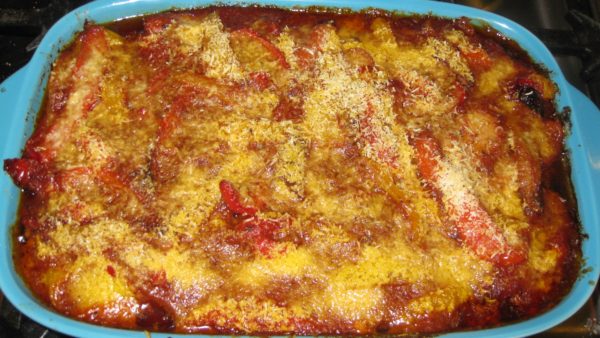
| Prep Time | 30 minutes |
| Cook Time | 2 1/2 hours |
| Servings |
people
|
- 4-5 cloves garlic bruised
- 1/4 cup extra virgin olive oil
- 12 chicken thighs preferably skin-on and bone-in
- 3 red Bell peppers
- 3 yellow Bell peppers
- 3/4 cup dry white wine
- 1 cup chicken broth
- 1 28 ounce can whole tomatoes in puree preferably Italian plum tomatoes
- 1 teaspoon dry oregano plus more to taste
- salt
- black pepper freshly ground
- 3/4 cup Pecorino Romano cheese freshly grated
Ingredients
|

|
- Pass the can of tomatoes through a food mill to remove seeds and hard bits of tomato. Reserve the tomato puree.
- Slice the peppers into triangular pieces or thick strips.
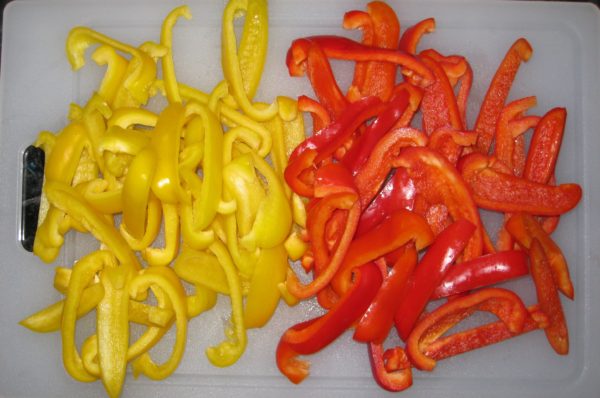
- Using a large heavy-bottomed sauté pan, sauté the garlic in the olive oil over medium heat until medium brown. Discard the garlic.
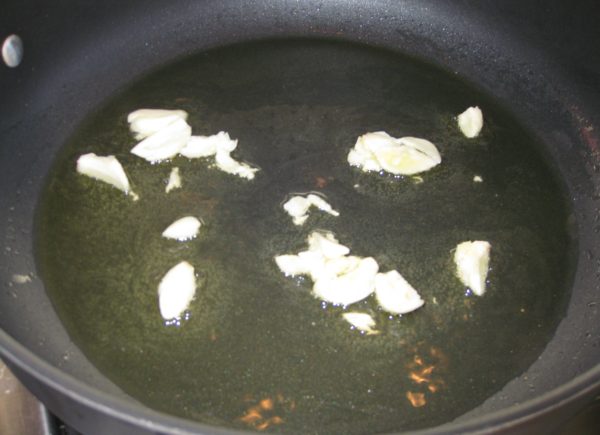
- Sauté the chicken in the garlic-flavored oil over high heat, starting skin side down to render additional fat from the skin, flipping twice, until well browned. Remove and reserve chicken.
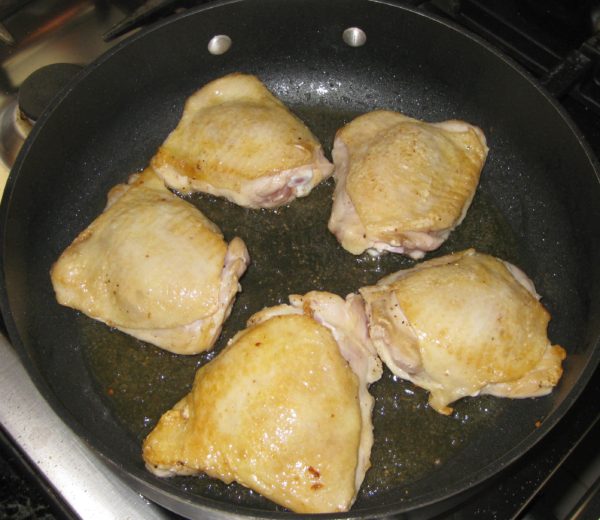
- Add the peppers to the oil and sauté briefly over high heat to put a light char on some of them. Remove and reserve peppers.
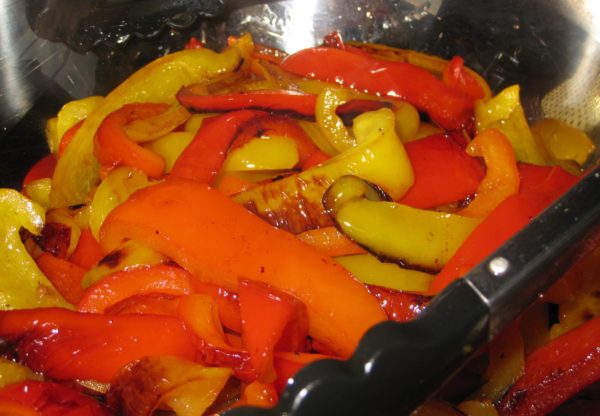
- Add the wine to the sauté pan, bring to a boil, and scrape up all the brown bits.
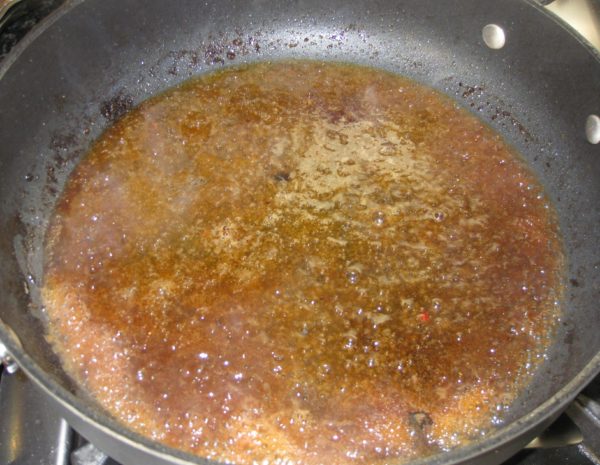
- After the wine evaporates, add the broth, tomato puree and oregano. Mix well.
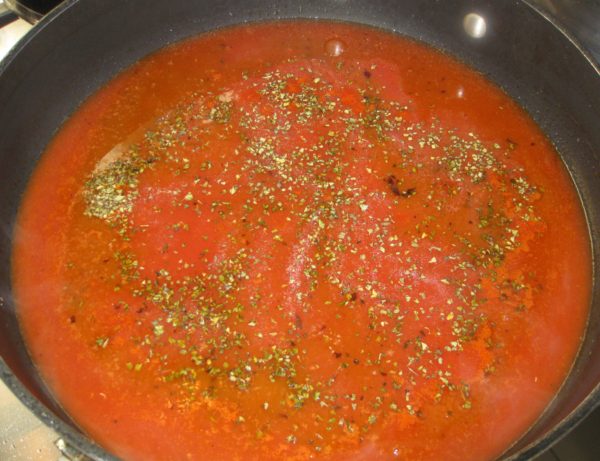
- Add the chicken, skin side down, along with any accumulated juices. Season with salt and pepper.
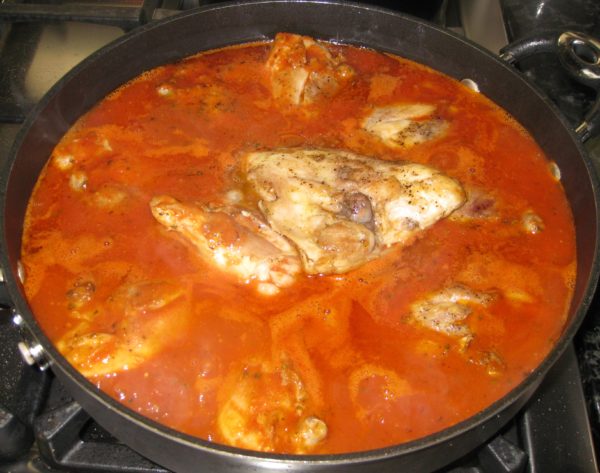
- Simmer, partially covered, approximately 30 minutes (or, if you live at high altitude as I do, 60 minutes). Turn the chicken over. Remove and discard the skin (the skin adds lots of flavor as well as collagen to the sauce for a great mouth-feel so please use bone-in and skin-on thighs).
- Add the peppers and continue to braise, partially covered, for approximately another hour until the chicken is literally fall-apart tender. During cooking, taste and adjust salt, pepper, and oregano.
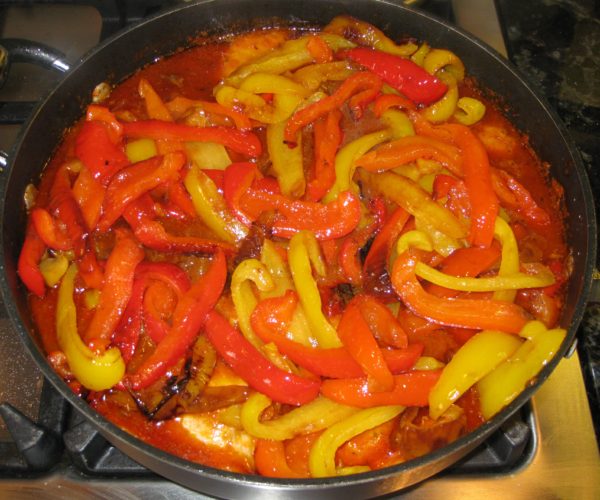
- Transfer the chicken and peppers to an oven-proof casserole.
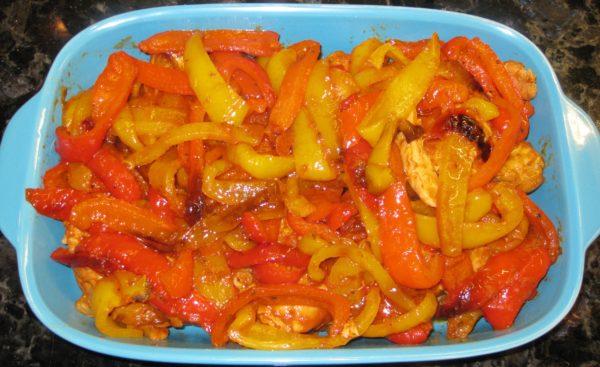
- If the sauce is not thick, boil quickly to reduce it. Pour the sauce over the chicken.
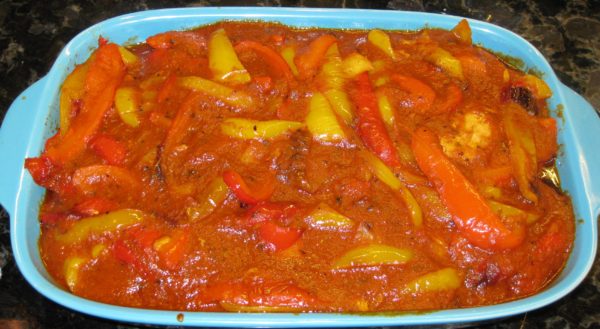
- Sprinkle the top with Pecorino Romano cheese.
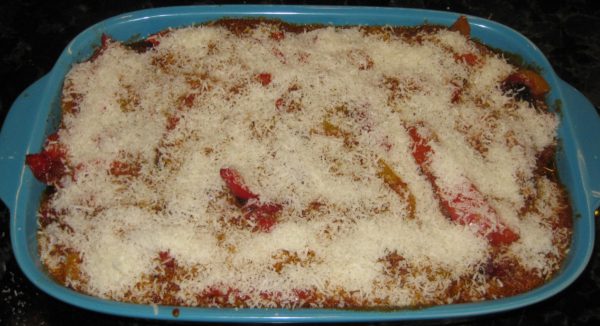
- Bake at 350°F to brown the top, approximately 15-20 minutes.
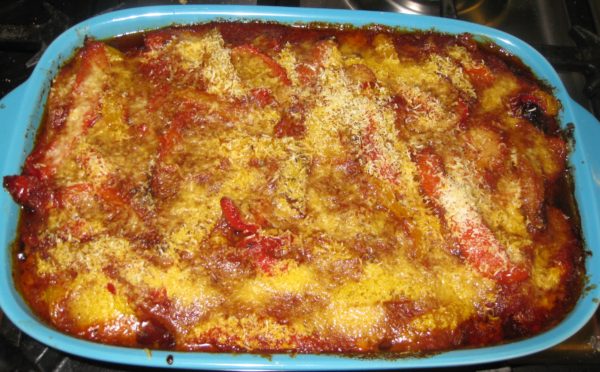
Copyright © 2020 by Villa Sentieri, LLC. All rights reserved.

